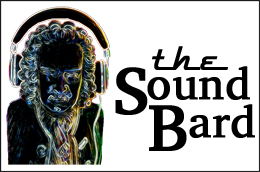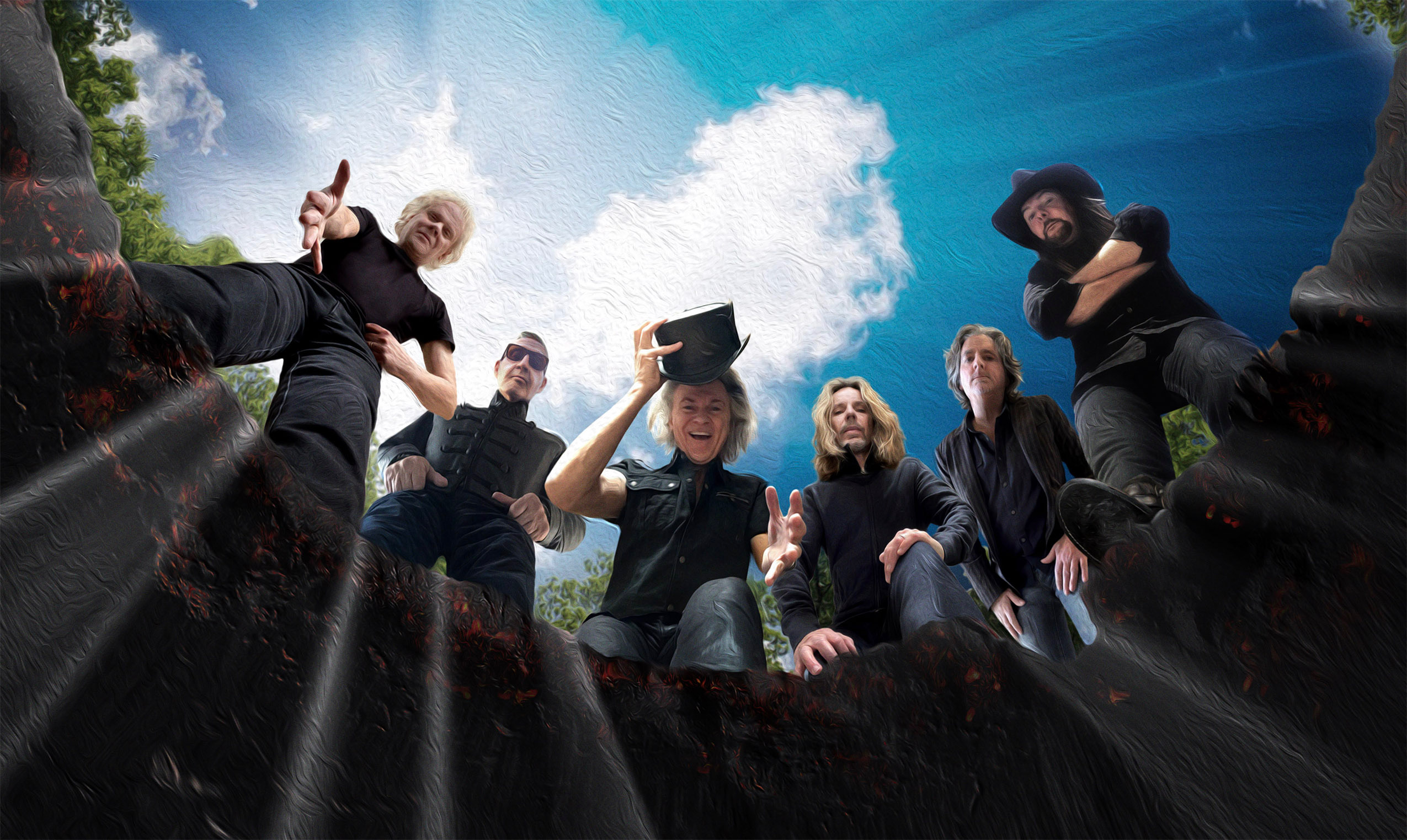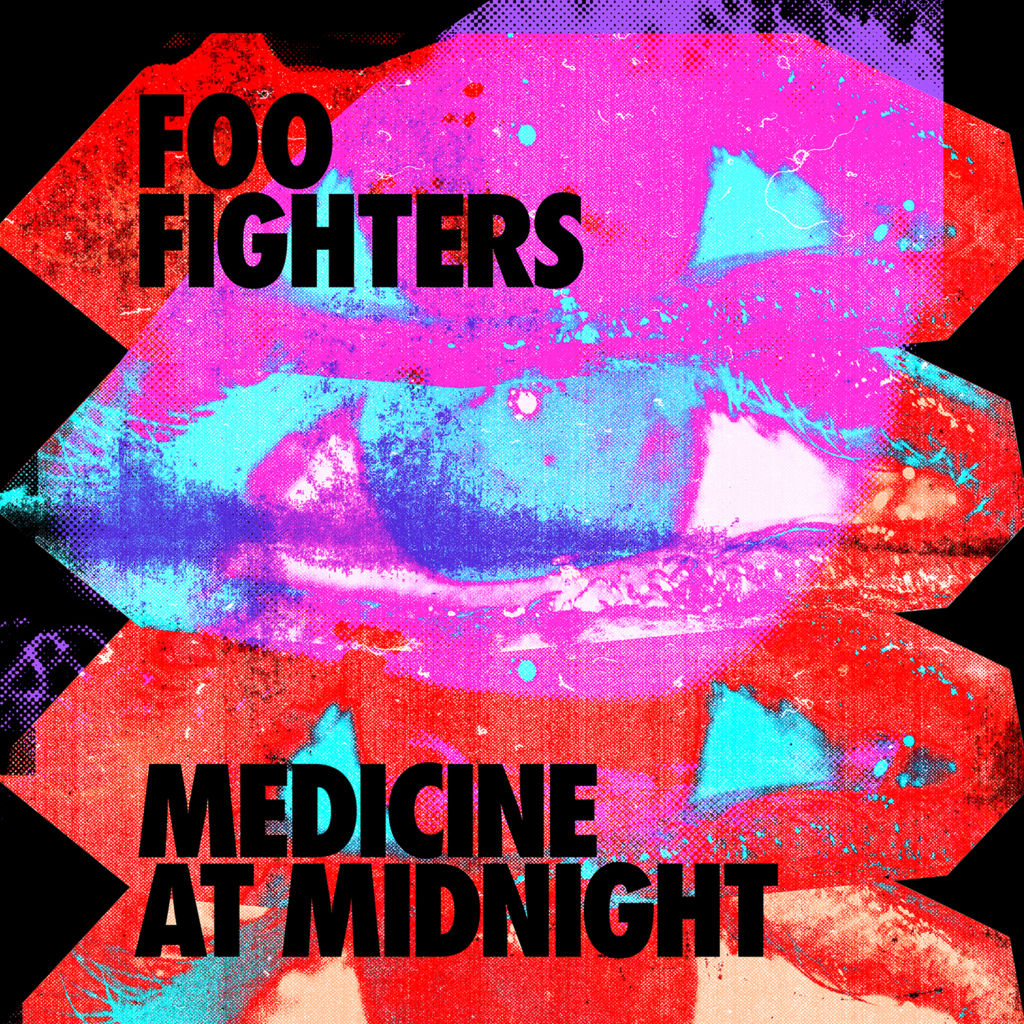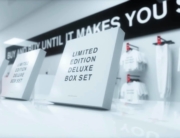BY MIKE METTLER — JANUARY 1, 2022
Tales From the Clean N’ Scrub Union: Many recording artists made great use of our ongoing, off-putting pandemic times to create some of the best work of their respective careers. Some of them are only now just entering the cognizant creative fray to both capture and reflect the zeitgeist for the very first time, while others are perpetually impressive veteran cosmic rockers who continue to reaffirm that age ain’t nothin’ but a number.
Whether you choose to consume your music via top-shelf streaming services, high-grade 180-gram vinyl LPs, hi-res audio downloads, standard-issue CDs, and/or full-on 5.1, 7.1, and/or Dolby Atmos surround-sound-oriented mixes, this past year delivered a wonderfully wide wave of full-length aural wonders. In reverse order, here are The SoundBard’s Top 31 long-players of 2021.
31. Foo Fighters: Medicine at Midnight. Roswell/RCA. Nirvana drummer-turned-frontman Dave Grohl and his platinum-selling Foo Fighters collective have spent the past 25-plus years ascending the alt-rock pantheon. Thirty years onward from Nirvana’s gamechanging Nevermind, the Foos’ tenth studio album, Medicine at Midnight, reinforces their signature heavy-yet-melodic song template but also embeds some additional compositional colors amidst a firmly entrenched sonic palette. “Shame Shame” sets the transitional tone with a kinetic live-in-the-room vibe fueled by powerhouse drummer Taylor Hawkins’ hi-hat accents, plinking strings, and Grohl’s yearning lead vocals, the latter tinged with just the slightest touch of Prince-like sensitivity. The title track slinks along with some sleek back-alley funk, while the strings-laden acoustic lookback lament “Waiting on a War” shifts into overdrive in its final minute to earn a full-bore metallic payoff. The lightly plaintive “Chasing Birds” could double as a long-lost mid-period Wings track, and a pair of festival-friendly fistpumpers — the skyburnt groove of “Cloudspotter” and the defiantly propulsive pandemic kiss-off of “No Son of Mine” — vigorously bump chests together at the headbanger’s ball. Crank two amps and call me in the morning — though it breezes by at an economical 36 minutes, Medicine is just what the aural doctor ordered for the Foos to continue dominating the alt-rock playing field.
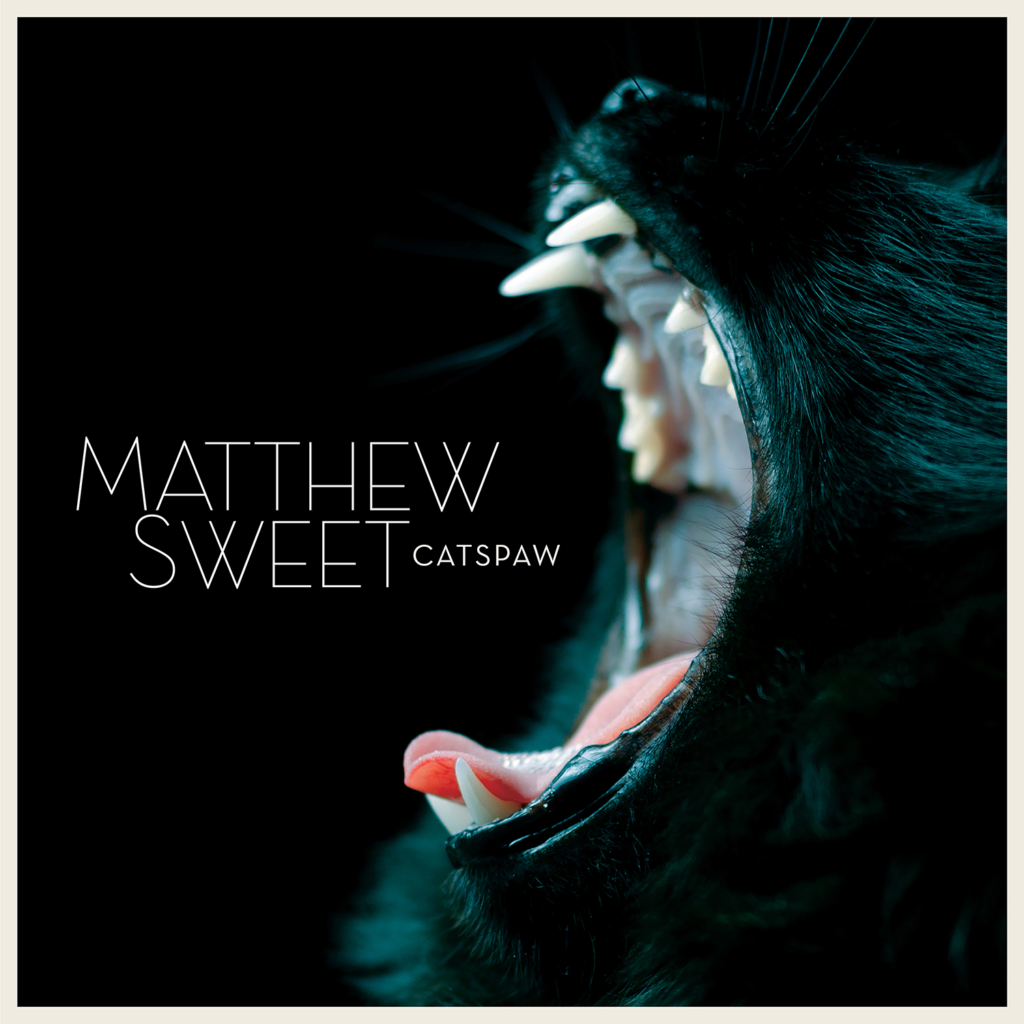
30. Matthew Sweet: Catspaw. Omnivore. Pop/rock progenitor Matthew Sweet has spent the balance of his career laser-focused on honing major songwriting chops while concurrently crafting melodic earwigs, unblinkingly handing off any and all lead-guitar histrionics to top-shelf firebrand collaborators like Richard Lloyd, Robert Quine, and Ivan Julian. Now entering his mid-50s, it’s finally time for Sweet to step out front and shred with abandon on his 15th solo album, Catspaw. A decidedly Crazy Horse crunch is well in evidence on the opening track “Blown Away,” in turn belying the intimacy of a mostly one-man-band recording cut, engineered, and produced at Sweet’s own Black Squirrel Submarine home studio. Sweet places his own leadlines and unbridled solos as upfront in the mix as possible without detracting from the core arrangements of each song, a critical illustration of his finely seasoned production instincts. The determined pounce of “Challenge the Gods” gives a hardcore middle finger to would-be detractors, while a searing “Parade of Lights” seals Sweet’s Neil Youngian archetyping. That said, Sweet’s guitar-centric intentions don’t detract from his vocal-stacking proclivities or penchant for layered harmonies, as the richness of both “Stars Explode” and “At a Loss” handily prove. Without a doubt, Sweet’s full-roar Catspaw is the cat’s meow.
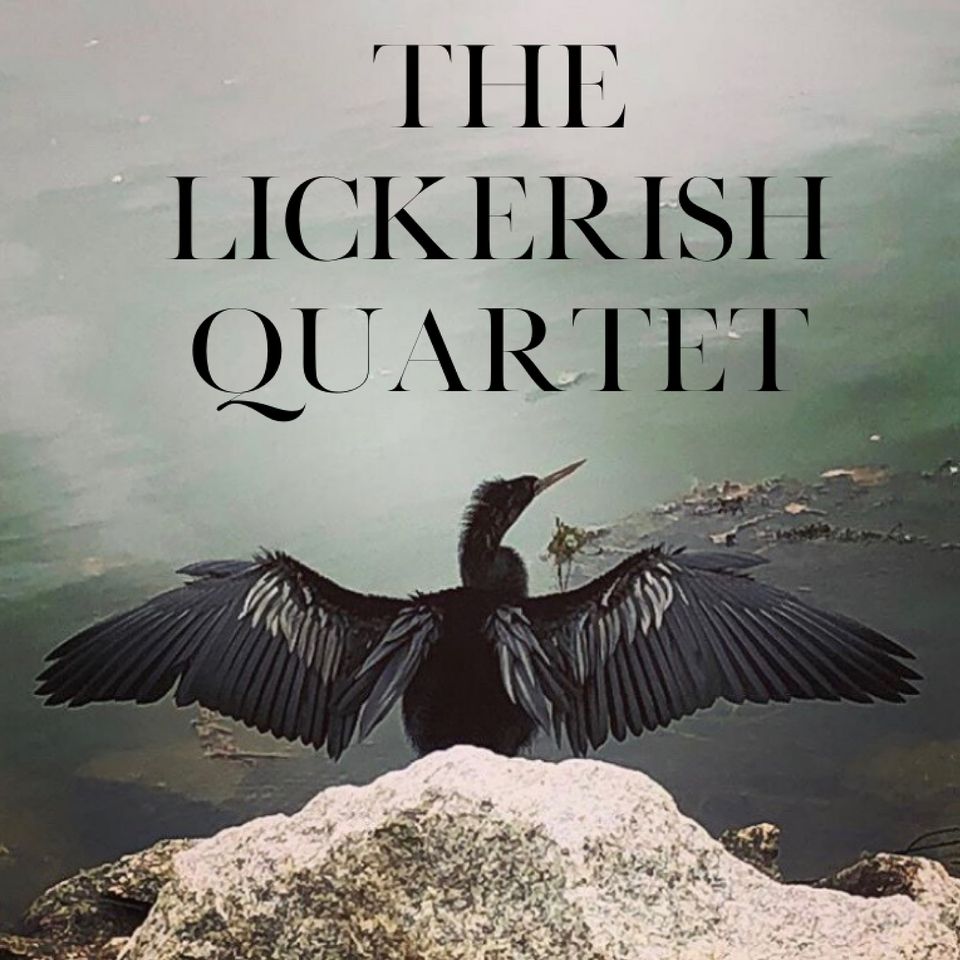
29. The Lickerish Quartet: Threesome Vol. 2. Stranger Danger Records and Tapes. Bands rarely blossom without displaying palpable ongoing chemistry. Take Roger Joseph Manning Jr., Tim Smith, and Eric Dover, three ex-Jellyfish mega-musos now reunited under their cheekily chosen sobriquet, The Lickerish Quartet. The sonically in-sync trio reconnected three decades later to conjure 2020’s masterful Threesome Vol. 1 EP, and now they’ve bequeathed us the inevitably dubbed and superbly crafted sequel EP, Threesome Vol. 2. “Do You Feel Better?” kicks things off with much compositional flair, as the continual wash of Manning’s majestic keyboard and Mellotron flourishes support this seductively harmonious ode to letting go. “Sovereignty Blues” is a deceptively sunny, AM radio-styled singalong ELO’s Jeff Lynne would undoubtedly approve, albeit one lined with a lyrical underbelly of fear — and a few well-intentioned surface-noise breaks to boot. “The Dream That Took Me Over” gleams brightly with Dover’s lead-vocal zeal and Smith’s propulsive Roxy Music-leaning bassline, while the breakneck groove of “Snollygoster Goon” is paired with blissful stack o’ vocals volume swells primed to induce twin-channel whiplash whenever the title phrase materializes. Vol. 2 vaults TLQ even further into the alt-pop stratosphere, and it fills me with enough recurring earwig rewards that I must humbly ask this most merry triple-threat Quartet: When might we expect Vol. 3?
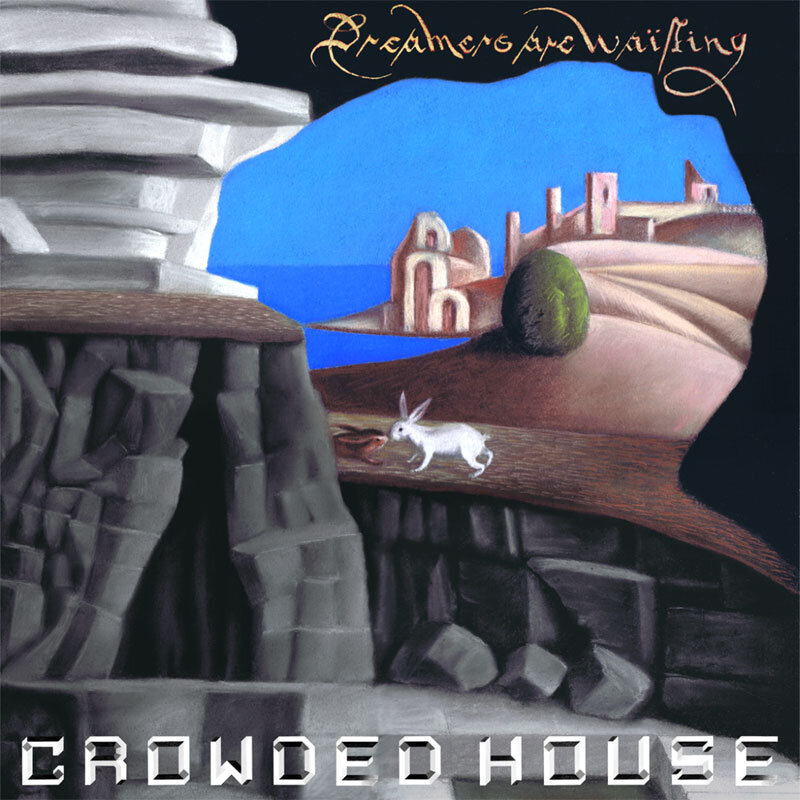
28. Crowded House: Dreamers Are Waiting. BMG. New Zealand’s longtime favorite sons Crowded House have always been somewhat of a family-driven enterprise led by Neil Finn, the gifted songwriter-cum-multi-instrumentalist who’s spent decades mastering the art of metamorphosizing the collaborative Lennon/McCartney songwriting ethos into his own stylized worldview. Originally constructed as a tight trio in the heady heyday of ’80s alt-rock, Crowded House were recently redrawn into quintet formation for Dreamers Are Waiting, the first album released under the group shingle since 2010’s ever-evocative Intriguer. Now buoyed by Neil’s sons Liam on guitars and Elroy on drums respectively, alongside original bassist Nick Seymour and producer Mitchell Froom on keyboards, Dreamers fortifies papa Finn’s aptitude for concocting melodic pop songs that are never overpowered by their arrangements. Instead, tracks like the falsetto-enhanced “Playing With Fire” float by like fluffy clouds primed to burst at any given moment, just as the playfully roguish observations of “Whatever You Want” unfold in layered breaks supported by glorious harmony half-stacks that would do The Beach Boys and 10cc proud. Meanwhile, Elroy’s smartly subtle Ringoesque backbeat buttresses Neil’s earnest lauding of a “Real Life Woman.” Ultimately, these 42 minutes of catchy pop manna are ready and Waiting to reward your ears with many aurally satisfying recurring dreams.
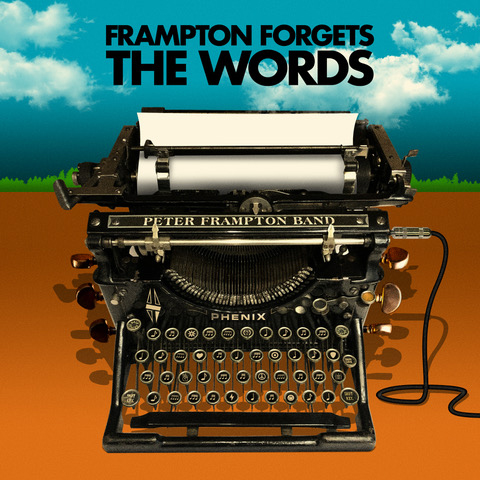
27. Peter Frampton Band: Frampton Forgets the Words. UMe. Forgets the Words more than lives up to its semi-tongue-in-cheek title, sporting ten instrumentals that showcase Peter Frampton’s still-deft touch on the fretboard, whether it’s his fresh take on Radiohead’s “Reckoner,” his sympatico reading of George Harrison’s “Isn’t It a Pity,” or his soaring revisiting of David Bowie’s “Loving the Alien,” a showcase track for Frampton when he was the lead guitarist on Bowie’s 1987 Glass Spider Tour. Frampton’s guitar is the true voice of this record, with his note choices taking the place of lyrics in a myriad of deeply affecting ways. At the beginning of the band’s fervent cover of Roxy Music’s “Avalon,” Frampton draws out the “i” where the word “tired” would have appeared at that point in the song with such impassioned inflection that it perfectly mirrors the emotion of Roxy vocalist Bryan Ferry’s original intent. “These are tributes. We don’t call them versions,” Frampton told me back in April. “We call each one of them a tribute to the artist. We wouldn’t have picked them, had it not been for the fact that we loved them. We’re certainly not trying to ruin them!” Even as he wrestles with the ongoing effects of inclusion body myositis (IBM), an inflammatory muscle disease, Frampton continues to hit all the right notes.
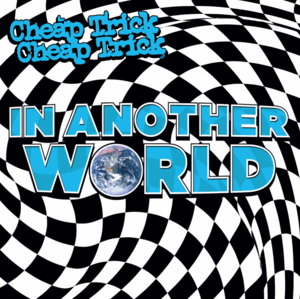
26. Cheap Trick: In Another World. BMG. Cheap Trick would probably get the greatest kick out of being dubbed the direct American power pop descendants of The Beatles. Better yet, let’s call them the H&H Music Factory — as in, Hooks & Harmonies, Inc. The Tricksters’ 20th album, In Another World, reinforces their staunch Midwestern mesh of sweet and salty sounds designed to make you sing along with every chorus as well as test the limits of your volume controls. Aural-candy heartthrob vocalist Robin Zander and guitar-tsunami swami guitarist Rick Nielsen are at the apex of their collective powers here, balancing the swashbuckling snarls of “Another World reprise” and “The Party” (cheers to offspring drummer Daxx Nielsen’s gallop-and-go style and bass maestro Tom Petersson getting the last riff) with the wistful balladry of “So It Goes” and “I’ll See You Again.” The latter two tracks both feature delicate percussive touches and supportive string accents that wisely supplement, rather than overwhelm, the final mix. Meanwhile, the patented, layered Zander sneer dominates the deliberately Lennonesque verses of “Final Days,” its own back half finely accented by guest Jimmy Hall’s hearty harmonica bursts in the right channel countered by Nielsen’s thunder-riffage responses in the left. It’s Another winning entry in Cheap Trick’s checkerboard catalog.
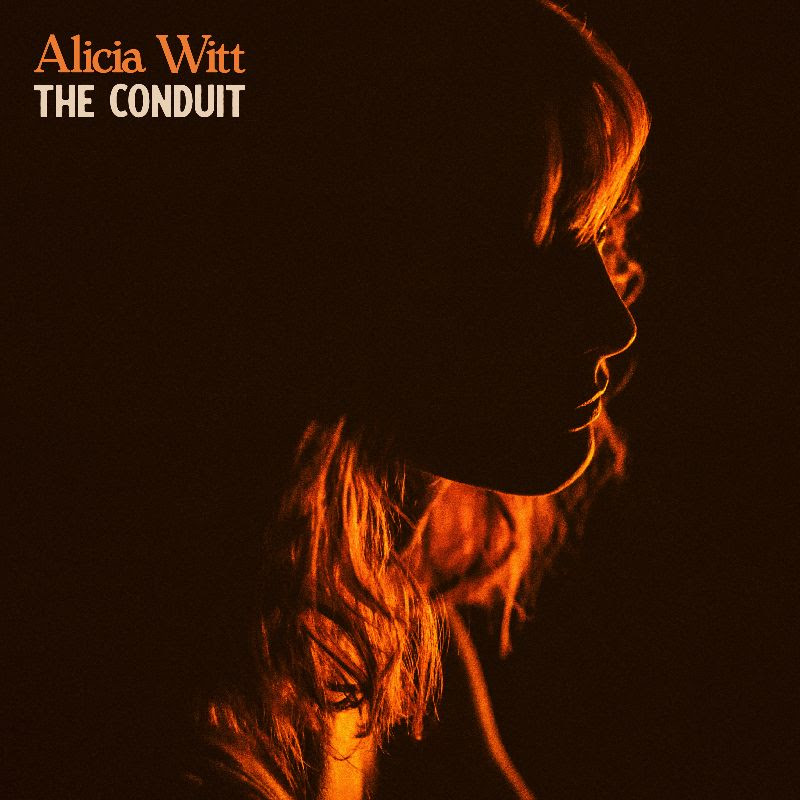
25. Alicia Witt: The Conduit. Alicia Witt Music. If singer/songwriters can’t be honest with themselves, they certainly can’t expect their audience to relate to the personal stories they deign to share with us. Good thing ace pianist/vocalist Alicia Witt has no interest in hiding who she truly is. Witt has spent more than a decade opening herself up through her ever increasingly impressive songwriting, and The Conduit is the apex of an artist showing us all of her inner self, masks down, both figuratively and literally. Organ and string accompaniment buttress the slowly unfolding live-off-the-floor title track’s soul-laid-bare confessional nature, while the percussive, wary “Down She Goes” chronicles the arc of letting one’s walls down and the building lilt of “Chasing Shadows” mirrors the joy of finding exactly what you’ve been looking for all along. “Serving as my own album producer for the first time, I felt that exactly what I intended with each song and each soundscape was perfectly reflected in the final process,” Witt told me the other day. “This album, more than any other release so far, truly said what I intended it to when I set out to create it.” (The balance of this convo will appear in my full Top 31 Albums list in January.) The Conduit channels the art of capturing the best intentions of the eternal searching heart — just as all the best, most honest music must.
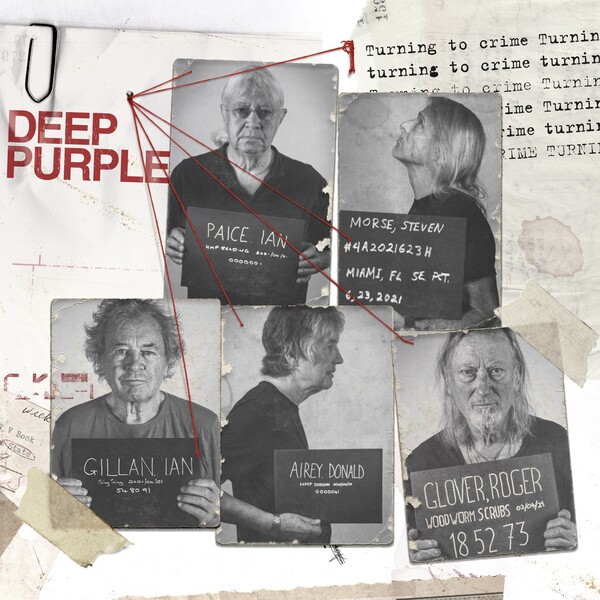
24. Deep Purple: Turning to Crime. earMUSIC. In the late-’60s, Deep Purple’s psychedelically shaded takes on Joe South’s “Hush” and Neil Diamond’s “Kentucky Woman” laid the groundwork for the British quintet to transform into one of the leading progenitors of a galvanizing guitar/keyboard mesh that came to define a certain wing of the rock pantheon. Fast-forward to the present day, where Deep Purple and favored producer Bob Ezrin collectively serve up 11 covers evenly crosscut between the somewhat expected and the refreshingly surprising. Vocalist Ian Gillan adds a world-weary tone to the wider-eyed innocence of The Yardbirds’ “Shapes of Things” and spreads some fine down-home spice atop Little Feat’s “Dixie Chicken,” while American-bred axe wizard Steve Morse shreds the curtains out of Eric Clapton’s guitar-solo blueprint on Cream’s seminal “White Room.” “Caught in the Act,” the album-ending, 8-minute five-song medley, effectively draws keyboardist Don Airey into the spotlight, as he sprinkles the right amount of his own flavoring amidst signature organ riffs from the likes of Booker T. Jones, Gregg Allman, and Steve Winwood. Deep Purple have clearly done due diligence by listening like thieves to a wide swath of music sources to pour their own signature sonic sauces into, resulting in proving the dictum that Crime pays handsomely indeed.
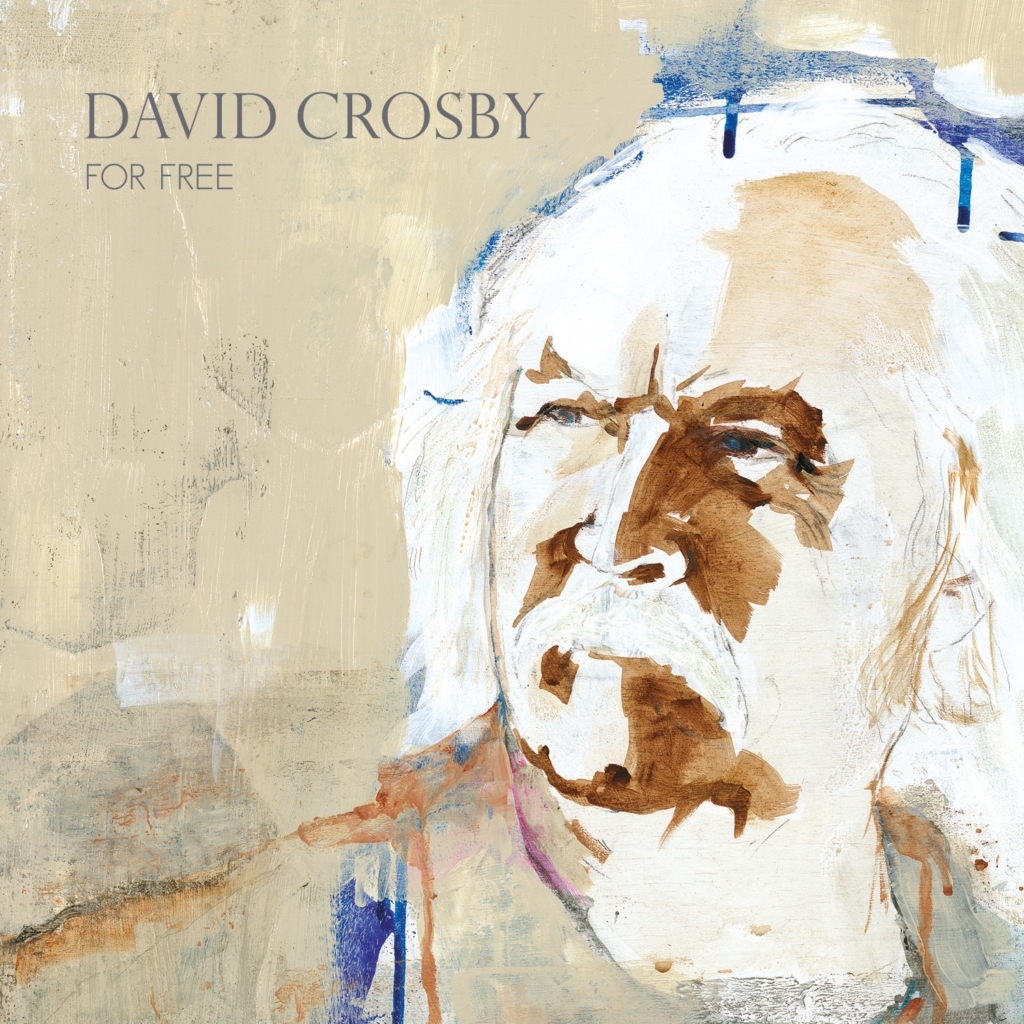
23. David Crosby: For Free. BMG. Considering how many lives he’s led and all the obstacles he’s overcome, David Crosby must have been born in the Year of the Cat, right? Actually, Croz was born in the Year of the Snake (1941), which might serve to inform how he’s instinctively slithered through any storm crossing his path. For Free, his seventh solo album — and fifth studio release in the last seven years — is further proof Crosby remains an artist unbowed. Though his deliberately soothing, contemplative vocal tone may be the literal definition of adult contemporary, there’s nothing lax in the way Croz emotes every blessed syllable to intended effect (see the empathic narrative firing lines of “Shot at Me”). The funky-tunk groove of “Rodriguez for a Night,” ever-so-sleekly buttressed by Steve Tavaglione’s tenor sax and Walt Fowler’s flugelhorn and trumpet lines, comports itself like a long-lost Steely Dan track — no surprise, really, given Donald Fagen’s co-writing credit —while the vocal blends on the skyward-looking “The Other Side of Midnight” and cascading harmonizing with Michael McDonald all throughout “River Rise” are the very embodiment of sonic bliss. For Free is worth every damn penny you’ll pony up for the privilege of hearing Crosby carry the torch for creative perseverance.
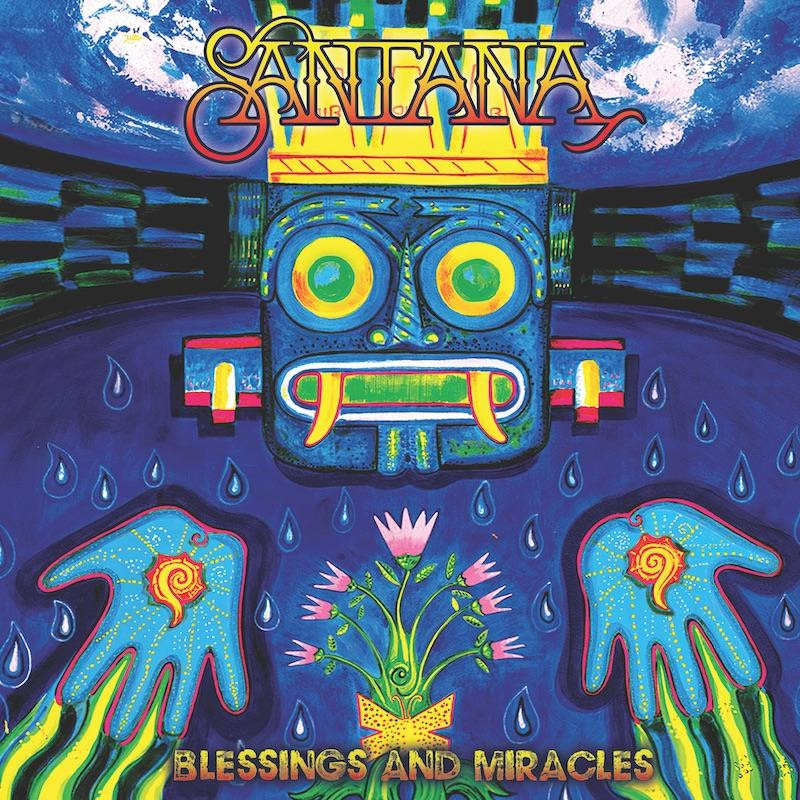
22. Santana: Blessings and Miracles. BMG. Carlos Santana is a universal conduit. The shamanistic guitar maestro furthers his never-ending pursuit of musical enlightenment with Blessings and Miracles, a continuation of his 21st century cross-genre mojo. “Move,” a sleek collaboration with Santana’s hermano de otra madre, Matchbox Twenty vocalist/lyricist Rob Thomas, is an ostensible sequel to their No. 1 1999 earworm “Smooth,” and if modern radio wasn’t so fractious, it would be an instant multi-format smash. Meanwhile, “Joy” finds Chris Stapleton doing his outlaw country thing atop a sultry reggae groove, with Santana’s leadlines appearing front and center for proper call-and-response time with Stapleton’s vocals during the verses, then set slightly back in the mix on the choruses. The ferocious societal diatribe “America for Sale” deliberately consigns the main riff from “Soul Sacrifice” for its bed while guest guitar shredder Kirk Hammett cuts heads with Santana note for note across a pair of epic soloing bouts, all of it narrated to seething effect by Death Angel vocalist Marc Osegueda. The breadth of Blessings and Miracles reinforcesCarlos as one of the few musicians who can truly connect with any artist in any genre, but make no mistake — at its core, the album’s star attraction will forever remain Santana’s unquenchable soulfire.
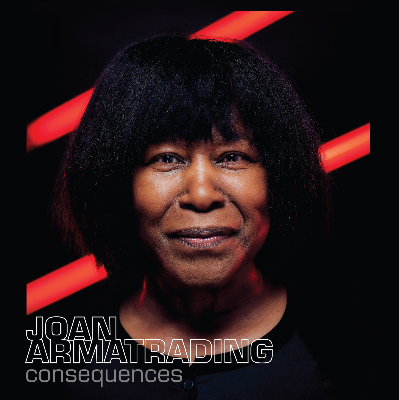
21. Joan Armatrading: Consequences. BMG. The latest evidence of how long-acclaimed British singer/songwriter Joan Armatrading continues to successfully marry her inherent knack for heartfelt songwriting with an acute acumen for arranging can be found all throughout Consequences, her 20th studio album. Armatrading’s impetus over the course of its ten songs is to take the listener through various permutations of the overarching emotional, well, consequences stemming from the socio-economic upheaval we currently face as a society at large. The warm acceptance embedded within “Already There” and the fervent wish for a “Better Life” seek to celebrate positive vibes amidst devastating global circumstances. In a sense, Consequences could be subtitled “Love and Affection” after one of Armatrading’s most celebrated songs from 1976 about embracing one’s innermost feelings. “A lot of people think all the songs are about me, but they’re not,” Armatrading told me back in June. “People believe my songs because they usually come from something that’s real for somebody else, and it’s my job to make them as real as I can for other people. But at the time of writing them, I’m not actually thinking about other people. I’m just thinking, ‘Do I believe this song? Am I into this song? Are these words making sense to me? Am I getting a feeling of something from this song?’ Once I’m happy that I’m happy, then it can go out there, and everybody else can hopefully get what I was trying to say.” Thanks to Armatrading’s undeniable songwriting gifts, these Consequences are as real and relatable as anything you’ll feel this year, or any other.
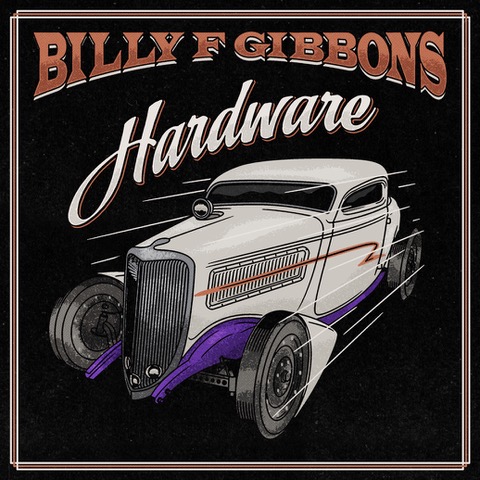
20. Billy F Gibbons: Hardware. Concord. Billy F Gibbons is one of the most gifted guitar wranglers of the rock era. His signature crawling blues snake boogie tone has defined the backbone of ZZ Top for well over 50 years, but even deeply vested frontmen have to step out from their little ol’ bands from Texas every now and then. Hardware, Gibbons’ third solo album in six years, takes its seedy sonic cues from the dusky desert locale of Southern California’s Escape Studios to emit diesel and dust at every turn. “West Coast Junkie” accentuates an addictive Tejas-meets-Cali surf und twang vibe to a capital T. Special kudos go to drummer/co-producer Matt Sorum, who nails its “Wipeout”-inspired break with wave-crashing panache. (“Have mercy,” indeed.) Gnarly slidefest “Stackin’ Bones” features Larkin Poe on heavenly response and harmony vocals, while the raucous riffage and cymbal-crashing of “S-G-L-M-B-B-R” propels an unapologetic Eliminator metaphor nose-first into the Tesla age. Album closer “Desert High” is an atmospheric, throaty spoken-word fever dream wherein Gibbons channels his inner Leonard Cohen to commune with Jim Morrison and his ilk on a peyote-fueled drive through Palm Springs. Hardware is hardwired for maximum dirty-groove velocity, its every pore proving Gibbons is as hot, blue, and righteous as he ever was.
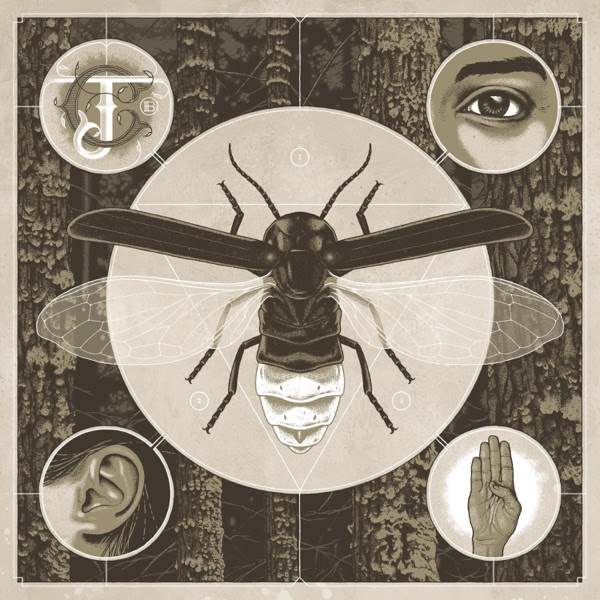
19. Jerry Cantrell: Brighten. Double J Music. Jerry Cantrell is a survivor, and a thriver. The longtime Alice in Chains guitarist, chief songwriter, and co-lead vocalist not only led that Seattle-bred hard alt-rock band forward following the 2002 death of vocalist Layne Staley, he’s also nurtured an intermittent solo career. Brighten, his third solo effort, benefits from an expanded musical palette assisted by co-producer Tyler Bates, a film composer who focuses his widescreen production lens on Cantrell’s deeper-rooted musical DNA. “Atone” churns ahead like a redemptive theme from an imaginary ’90s western — replete with Cantrell’s signature multi-tracked vocals and shrewdly placed acoustic break — and the mournful “Prism of Doubt” refracts Michael Rozon’s smoldering pedal-steel accompaniment into a sweetheart of a rodeo ballad while the sagely, keyboard-driven “Had to Know” ascends the throne as an arena-rock fist-pumper in waiting. The final track, “Goodbye,” an intimate, strings-enhanced cover of an Elton John tearjerker from 1971’s Madman Across the Water — directly approved by Sir Elton himself — puts a beautiful, haunting coda on a hard life chronicle that serves more as inspiration and less as resignation. It’s never easy taking the weight of the world off one’s shoulders, but Cantrell and his cast of characters’ collective can-do soundtrack is sure to Brighten your mood.
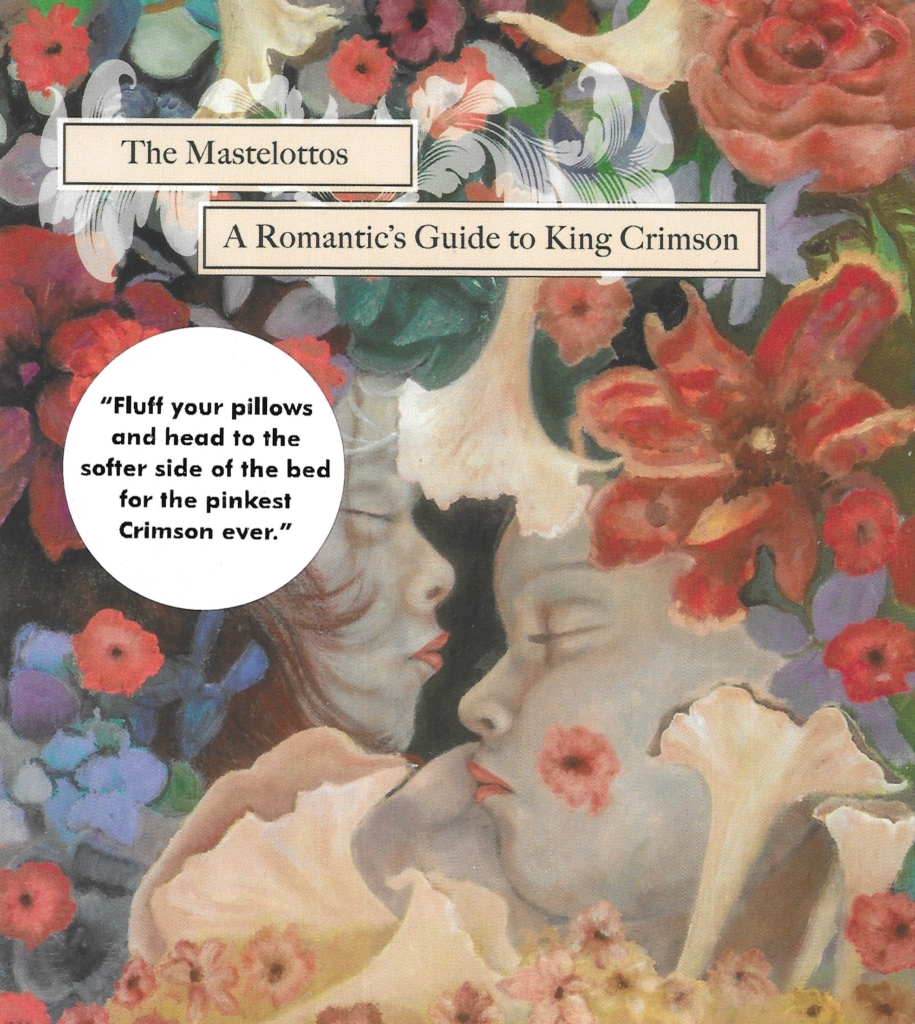
18. The Mastelottos: A Romantic’s Guide to King Crimson. 7Media. The Mastelottos comprise the power of two — namely, 1) innovative drummer Pat Mastelotto, a man who’s been a backbone member of King Crimson’s mighty drumming corps since 1994; and 2) his wife Deborah Mastelotto, a skilled jazz singer in her own right. Under The Mastelottos moniker, they’ve sought to put their own unique insider spin on a level-dozen King Crimson classics on A Romantic’s Guide to King Crimson. Think “Twin Peaks meets Kate Bush,” and you’ll instantly get the aurally seductive vibe this dynamic in-sync duo has set forth with their atmospheric takes on Crim classics like “Moonchild,” “Book of Saturday,” Exiles,” “Elephant Talk,” and “Sleepless.” It took The Mastelottos some doing to find just the right groove, however. “Pat started by trying to figure out a way to do jazz, but that’s not really right for him,” Deborah told me back in February. “Finally, I said, ‘Baby, you’ve gotta do it your way. Just make it pretty.’ That’s why this record is so unusual. It’s got a few jazz influences and it’s also a little lounge-y, almost like acid jazz. But then you hear these elements of Pat’s background — and I think that’s what makes it interesting. It’s still a Pat Mastelotto record.” For his part, Pat confirmed to me he got the go-ahead to recast such classic King Crimson cuts directly from the band’s co-founder/iconoclast guitarist and his longtime bandmate Robert Fripp himself: “It’s been a blessing for me, and for us, to make this record knowing Robert as well as we do — and knowing how he would encourage us to make it sound new.” Indeed, The Mastelottos have handsomely succeeded in their holy mission to further reimagine Crim music for all chromosomal combinations on the progressive-listening spectrum. Isn’t it Romantic?

17. Tedeschi Trucks Band Featuring Trey Anastasio: Layla Revisited (Live at LOCKN’). Fantasy. If anyone would dare deign to pull off a live, track-by-track runthrough of Derek and the Dominos’ seminal November 1970 double LP Layla and Other Assorted Love Songs with above-and-beyond fervor and aplomb, it could only be the modern jam wizards known as Tedeschi Trucks Band. TTB’s Layla Revisited (Live at LOCKN’) — recorded as a one-off festival event in Arrington, Virginia, on August 24, 2019 — is an improvisational master-class interpretation of one of the most heartfelt, and most heartbreaking, masterpieces of the rock era. On expansive cuts like the multi-movement “Why Does Love Got to Be So Sad?” and the eternally hopeful “Anyday,” Derek Trucks continually displays his Allman Brothers Band-bred guitar-hero bonafides in tandem with life partner and gritty lead vocalist/guitarist Susan Tedeschi, both ably accompanied by fellow axe-wielding maestros Trey Anastasio and Doyle Bramhall II. The lone studio track, an intimate take on the album-closing lament “Thorn Tree in the Garden,” is a first-ever Tedeschi/Trucks-only duet, an ideal cherry blossom coda if ever there was. On the original Layla, Eric Clapton, Duane Allman, and friends captured lightning in a broken-hearted bottle. On Layla Revisited, Tedeschi Trucks Band delivers a truly transcendent, heart-affirming performance sure to ease any discerning listener’s worried mind.
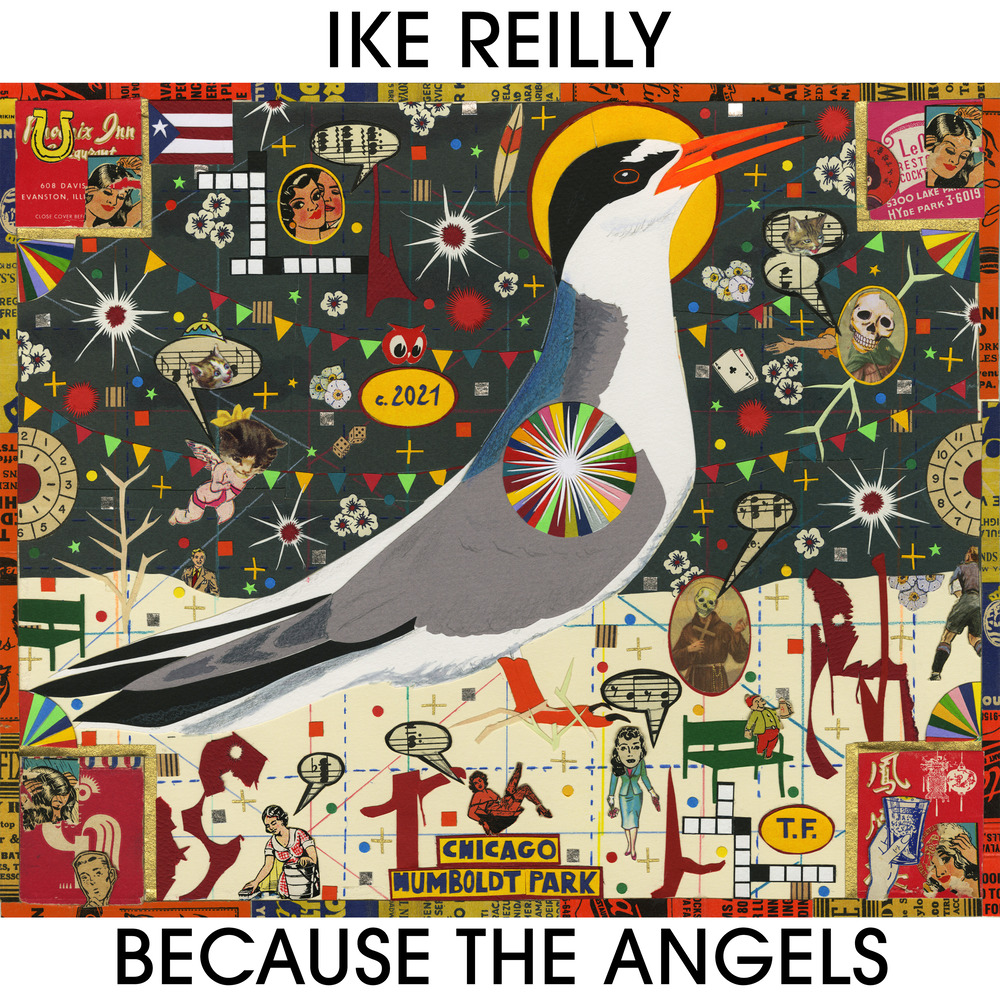
16. Ike Reilly: Because the Angels. Rock Ridge Music. Native Chicagoan songwriter Ike Reilly’s got that old time religion, and it suits him just fine. On Because the Angels, his eighth studio album, Reilly doubles down on chronicling the barenaked catechisms of rock & roll — and all the rewards and consequences that come with it. From the societal comeuppance of the sturm and twangy “The Muhammad Ali Museum” to the ethereal singalong payoffs a of the hypnotic 7-minute reverie of “Racquel Blue” to the harmonious rockabilly below-the-border travelogue of “The Failure of St. Michael,” Reilly’s gritty, stark songwriting confessionals cut deep and true. “If my album could reach anybody, I don’t care whether it pushes them one way or another — but if it takes them out of their own day-to-day existence about where they live and how they view things, that’d be cool,” Reilly told me and the members of my Kaboom Collective congregation, er, writing class during a Zoom interview session in October. “In order to communicate and have [my songs] mean anything. I think it’s important to really be telling a story. Whatever this story is, you just have to find something that connects your heart, your head, and your performance.” If the contents of Angels prove anything, it’s that Reilly’s storytelling acumen has ascended even higher into the pantheon of songwriters who paint vivid, unforgettable aural pictures with every new tale they tell.
Added bonus: You can read the following in-depth interview with Reilly, as penned by one of my illustrious students, the bright up-and-coming young writer Bella Marie, right here on my own SoundBard site: https://www.soundbard.com/soundbard/hitting-all-the-right-angles/
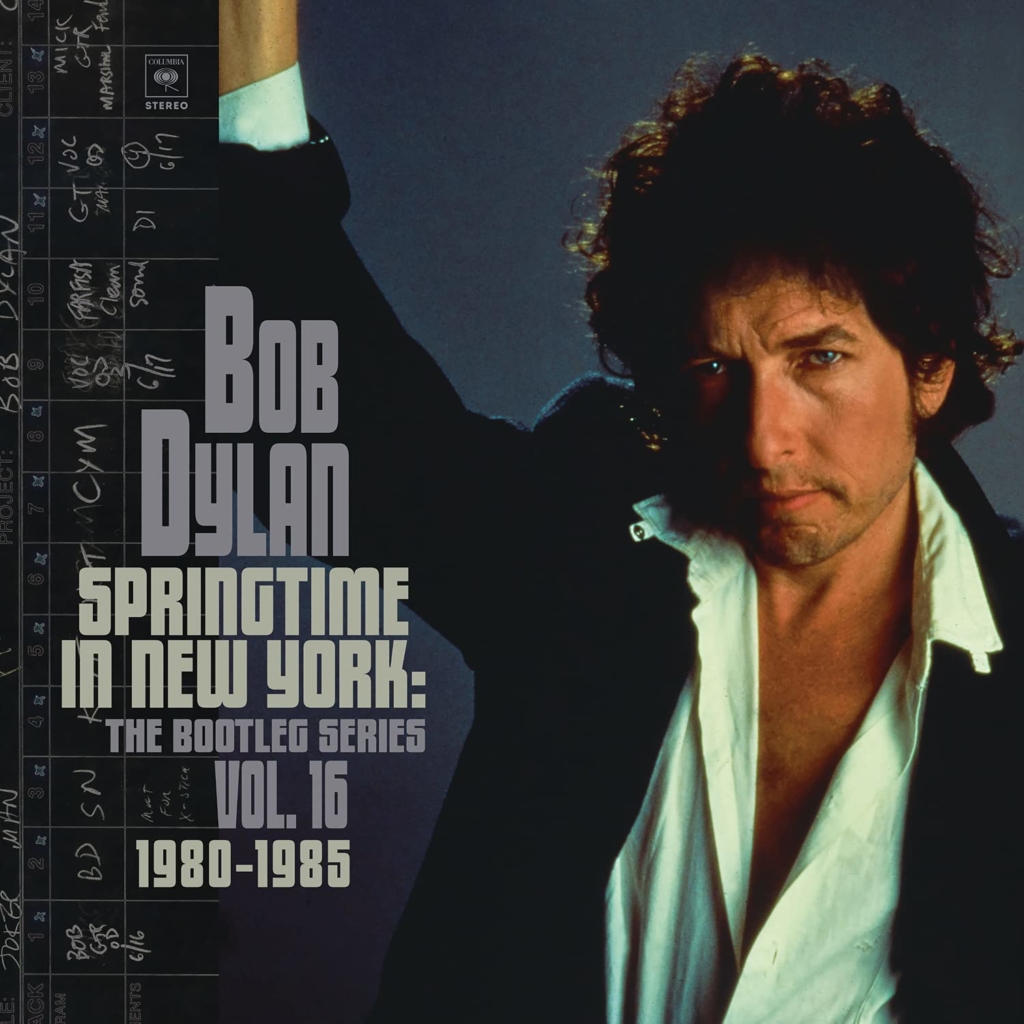
15. Bob Dylan: Springtime in New York – The Bootleg Series, Volume 16 (1980-1985). Columbia/Legacy. There are those who would agree a good portion of the first half of Bob Dylan’s MTV Decade output ranks among his strongest mid-period songwriting efforts — yours truly among them. Good thing we have this absolutely sweet and masterfully curated Bootleg Series, Volume 16 5CD set to bring some of his figurative ’80s basement tapes to the surface, with 57 outtakes, alternate versions, rehearsals, and live readings to tell the tale. Alt-selections from August 1981’s Shot of Love spill all over Discs 1 and 2, including the pleading, propulsive groove of “Need a Woman (Rehearsal)” and the almost-realized “Yes Sir, No Sir (Outtake),” featuring a “hallelujah” refrain as joyful as any church revival. Meanwhile, all the outtakes on Discs 3 and 4, from the sessions that begat October 1983’s Infidels, reinforce how cagily producer/guitarist Mark Knopfler was in coaxing Dylan into cutting definitive best takes for the songs that ultimately made the final album. Rather than deploying look-at-me histrionics, Knopfler shrewdly plays a supportive role throughout, with his signature guitar tone on cuts like “I and I (Alternate Take)” falling mainly into a late-’70s Dire Straits mashup style I’ll dub “Where Do You Think You’re Going Down to the Waterline.” That said, while “Jokerman (Alternate Take)” is indeed riveting, and though Dylan bares his teeth more and more intently during the latter half, the unrelenting vocal sneer that keeps building and building in the Infidels version isn’t quite in full effect yet. Disc 5 is consumed by the sessions leading up to June 1985’s Empire Burlesque, reminding us how Dylan really did hit a fine mid-decade stride. “Clean Cut Kid (Alternate Take)” pivots from the Chuck Berryesque vibe of its Infidels incarnation to benefit from guest twang guitar wrangling from Ron Wood, while all 12 minutes of “New Danville Girl (Outtake)” serve as a cinematic masterstroke that ultimately morphed into “Brownsville Girl,” the acknowledged magnum opus from July 1986’s Knocked Out Loaded. Considering just how good Springtime 1980-1985 is at mining this semi-lost half-decade in the Dylan canon, whichever era the no-doubt-ensuing Bootleg Series Vol. 17 deems worth tackling, I’ll be there to see more of the real Dylan at last — or at least as much as the fates allow.

14. St. Vincent: Daddy’s Home. Loma Vista. St. Vincent is a musical chameleon of the highest order, and somewhere out there, the late, great David Bowie is nodding his abject Aladdin Sane-approval. Daddy’s Home, co-produced by St. Vincent and Jack Antonoff — who first set their sonic-mindmeld table together when they woman-and-manned the boards for 2017’s rightfully acclaimed Masseduction — is mirrored on the seedy funk ’n’ roll character of 1970s New York City. Opening track “Pay Your Way in Pain” drops the gauntlet, starting innocently enough with jaunty piano and saloon-character whoops followed by synthy burbles, underwater warbles and anguished wails, and lush harmonies. The 6½-minute cloud-hugging ballad “Live in the Dream” wafts along like a vision board on acid, while the seductive phantasm that is “The Melting of the Sun” builds to a sizzling crisp with clever, slow-burn name-game wordplay, soulfully stacked background vocals, and a sultry guitar break that’s the equivalent of removing a pair of sweaty, thigh-hugging leather boots after a long, bleary night on the town. The artist more formally known as Annie Clark closes her top-floor urban soundtrack lesson with the wispy goodnight kiss of “Candy Darling.” Who’s your Daddy? Based on the repeat listening pleasures of these formidable 45 minutes, St. Vincent most decidedly is.
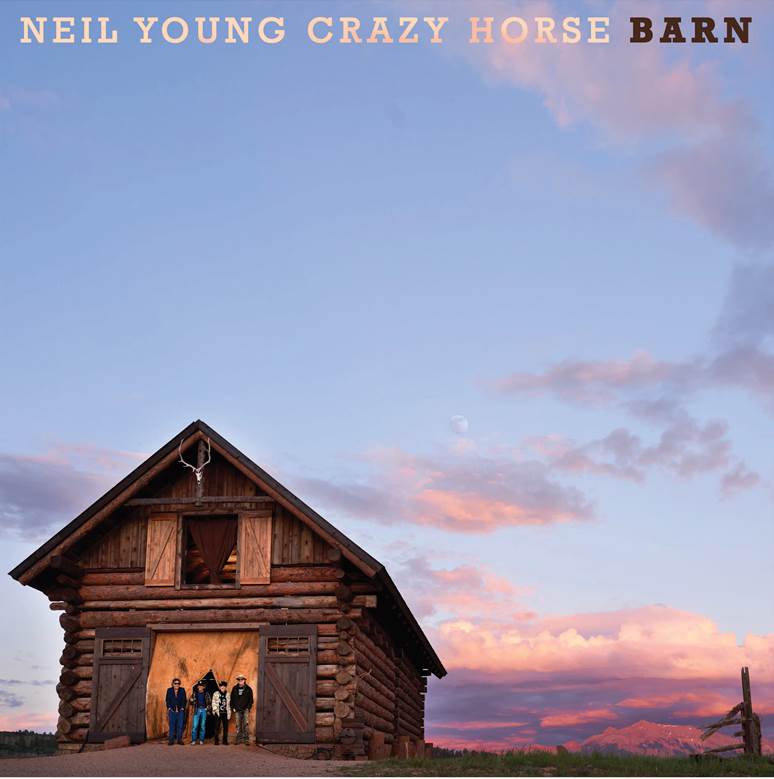
13. Neil Young & Crazy Horse: Barn. Reprise. Neil Young can’t sit still — and our ears and very souls are always the beneficiaries of his restless creative heart. No year goes by without some kind of multifaceted Youngian activity, and 2021 has brought us yet another treasure trove of new and archival Neil music. On the newer side of the ledger, Neil has once again saddled up with his longtime riding companions Crazy Horse to produce Barn, a literal barnburner of an album recorded live in a 19th century barn with the full moon as its critical backdrop to boot. The hard-galloping “Human Race” and slow-building jamfest of “Welcome Home” are prime Horse groovebashers, while the gnarly identity mashup of “Canerican” reflects positivity in the face of peril, and the album-closing “Don’t Forget Love” is an ode/mantra to holding onto what’s really important despite the odds and challenges we all face daily. “When you do the first takes, if you’re lucky and you’re good, you get the master right there. That happened more often than not with this [album],” Young explained in a videoclip on his YouTube channel. “There’s a lotta love in it — and lotta edge in it.” And that, in essence, is the very definition of the man’s music to the core — embracing the joy of love with the edge of an artist who concurrently stays true to his heart and his hardscrabble roots alike, because he knows no other way of doing it. Everybody should know: This Barn is pure Neil.
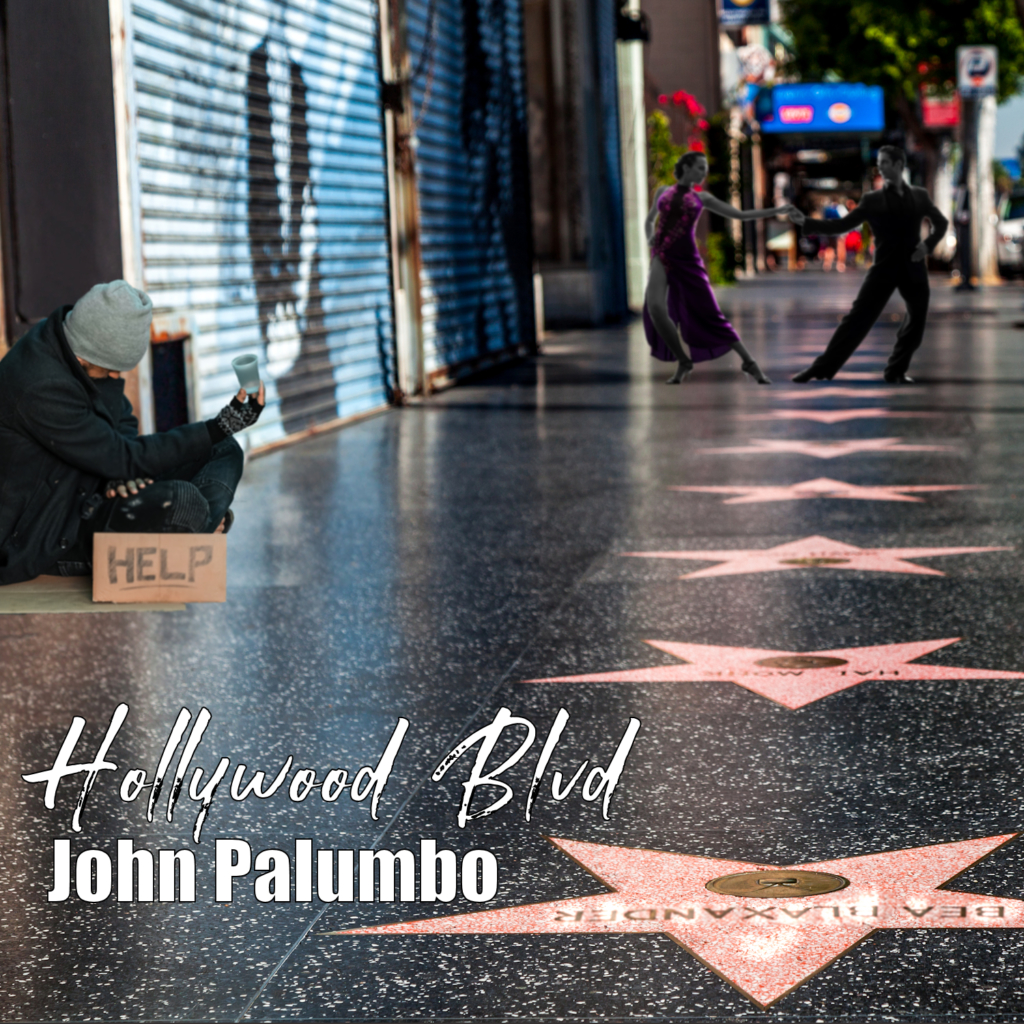
12. John Palumbo: Hollywood Blvd. Carry On Music. Subtitle it Tales From Funky Tinsel Town. Palumbo — the acclaimed lead singer and chief songwriter of the razor-sharp rock collective, Crack The Sky — serves up an even dozen of finely crafted and expertly recorded gems on Hollywood Blvd, a homegrown album on which he plays all the instruments himself, sans a number of key acoustic and electric slide guitar contributions from his ace Crack The Sky bandmate, Bobby Hird. Hollywood Blvd is paved with a number of earwig-inducing sonic avenues and cleverly winding wordsmithed roads, from the computerized victimization treatise of “Shutdown” to the insistent acoustic bed laid down for the unknowingly unhinged subject of “Crazy” to the insistent shifty-eyed snarl of “Funky Town” (no, not that one). “When I first sit down to write songs, I have to determine if I’m writing a Crack The Sky record, or if I’m writing my own record. My whole brain just goes to a different place when I’m writing my solo stuff,” Palumbo told me back in March. “Because I really love writing, I try to make my songs interesting and different. If I’m writing about love, for example, it’s a subject everyone writes about, so I try to put a unique take on it.” Indeed, Hollywood Blvd continues to cement Palumbo’s status as a shrewdly observational songwriter in the vein of Leonard Cohen and Lou Reed — and that’s one of the best listening avenues you could ever hope to visit.
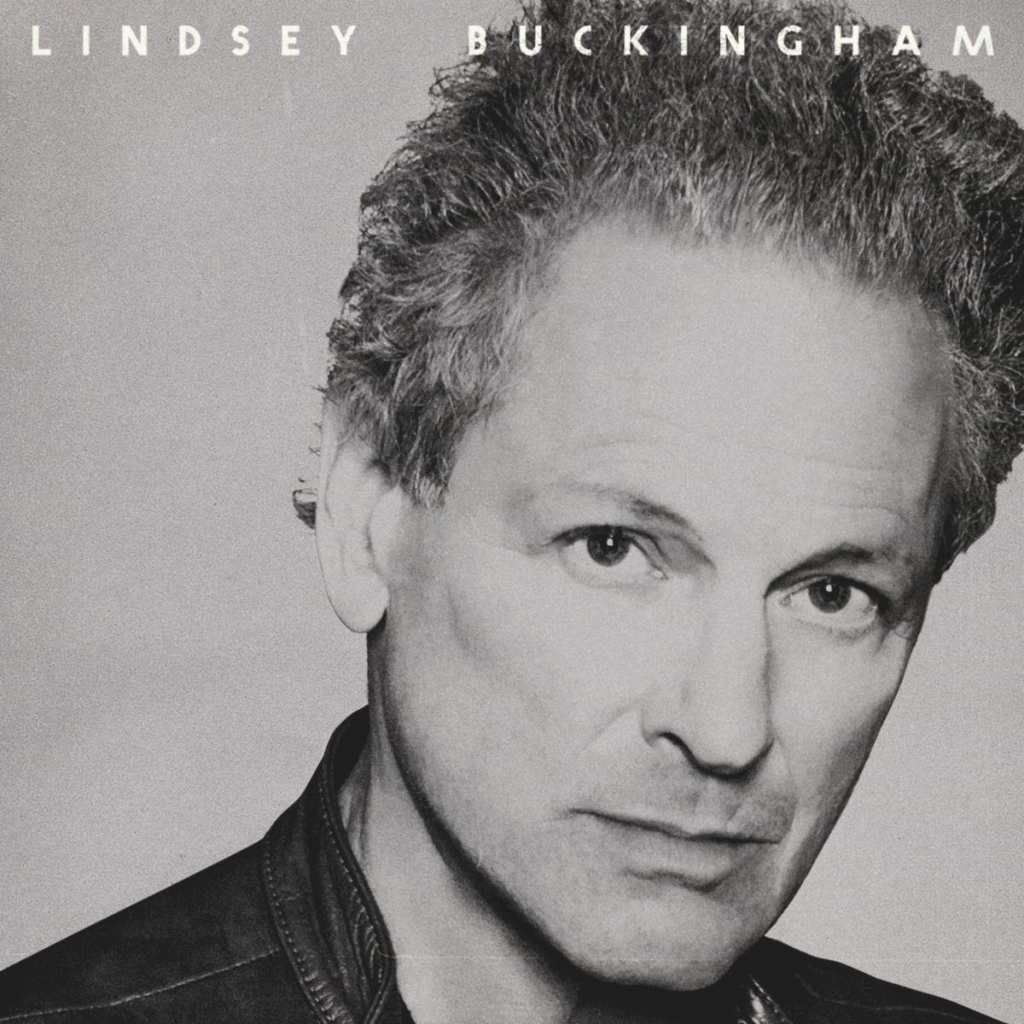
11. Lindsey Buckingham: Lindsey Buckingham. BMG. Lindsey Buckingham is a soul survivor. Two life-altering measures — reclaiming creative ground as a solo artist once again on the outside looking in at Fleetwood Mac, and a most welcome recovery from open-heart surgery in 2019 — are clearly pumping the lifeblood into the man’s first studio solo album in a decade. Lindsey Buckingham teems with ten song templates reflecting the artist’s signature one-man-band style — i.e., minimal yet lively arrangements, chameleonic vocal manipulations, and never-static, perpetually churning guitar lines. Buckingham is an avowed master of track layering, and the insistent rhythm of “Scream” sets the soundfield table thanks to multi-tiered vocals and recurring chimes reigning down the middle, counter guitar lines on the choruses being sent to the left, and percussion elements split both left and right. “Power Down” is a breathy, skittery rebirth treatise, while “On the Wrong Side” is a deceptively sunny look at things somewhat unsaid yet certainly known, buttressed by sweet vocal harmonies on the choruses and a pair of guitar solos — one measured, the other fast and furious — affirming his talent for knowing exactly when to unleash pent-up fury. Lindsey Buckingham is a career artist who, whenever compelled to go his own way, always charts the right path.
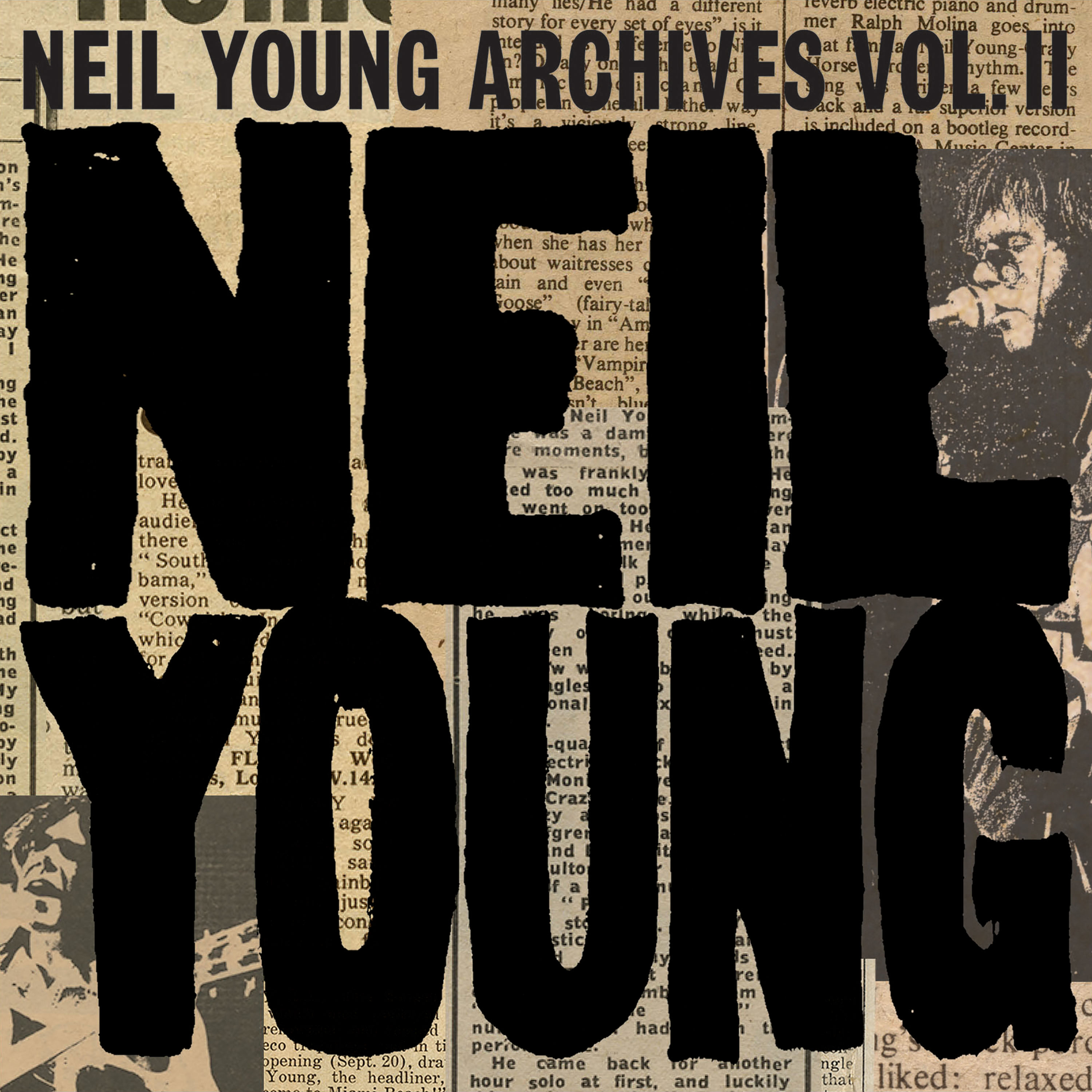
10. Neil Young: Archives Vol. II – 1972-1976 (Deluxe Edition). Reprise. Remember when I said, as I was discussing the merits of Neil Young & Crazy Horse’s truly excellent Barn in my No. 13 entry on this list, that no year goes by without some kind of multifaceted Youngian activity? This is the archival portion of the equation — i.e., the long-awaited Archives Vol. II – 1972-1976, a truly towering box set of epic proportions, both physically and aurally speaking. The first sequel to 2009’s five-star Archives Vol. I: 1963-1972 collection, Vol. II illuminates one of Neil’s most fertile creative periods, and it raises the stars ’n bars standard in terms of documentation, thoroughness, and overall listening enjoyment. This 12×7-inch pillar-size Deluxe Edition spreads a generous 131 tracks across 10 discs, with 62 of them either unreleased, appearing via alternate mixes, and/or surfacing through live options. I’d need five (maybe even 10!) more paragraphs just to describe the heart of all the pure audio gold embedded here, so the following highlight reel will have to suffice as a select smattering of the proceedings. To wit: I can’t get enough of tracks like the raw, diamond-in-the-rough promise of “The Bridge” (Disc 1), the ramble tamble chug of “Time Fades Away” (Disc 2), the tape-speed swoops that permeate the loping “Speakin’ Out Jam” (Disc 3), Joni Mitchell joining in to float through a truly majestic “Raised on Robbery” (also Disc 3), the boozy alt-country groove of “The Losing End (When You’re On)” (Disc 4), the surefire pedal-steel-kissed heartbreak of “Bad Fog of Loneliness” (Disc 5), the acoustically self-aware resolve of “Homefires” (Disc 6), Robbie Robertson’s tasteful right-channel guitar accents on “White Line” (Disc 7), the unmistakable Crazy Horse gallop fueling “Ride My Llama” (Disc 8), the stark piano-driven lament of “Stringman” (Disc 9), and the full-on live fury of “Drive Back” (Disc 10). Now apply this scale of appreciation to the remaining 120 Vol. II tracks I couldn’t cover here in further detail, and you get the fundamental idea regarding their sonic virtues. In short, Vol. II is the visceral pinnacle of archival presentation that every artist and label should follow if they want to preserve, protect, and proffer our collective audio history to the nth degree. Long may Neil — and this truly vital Archives series — run.
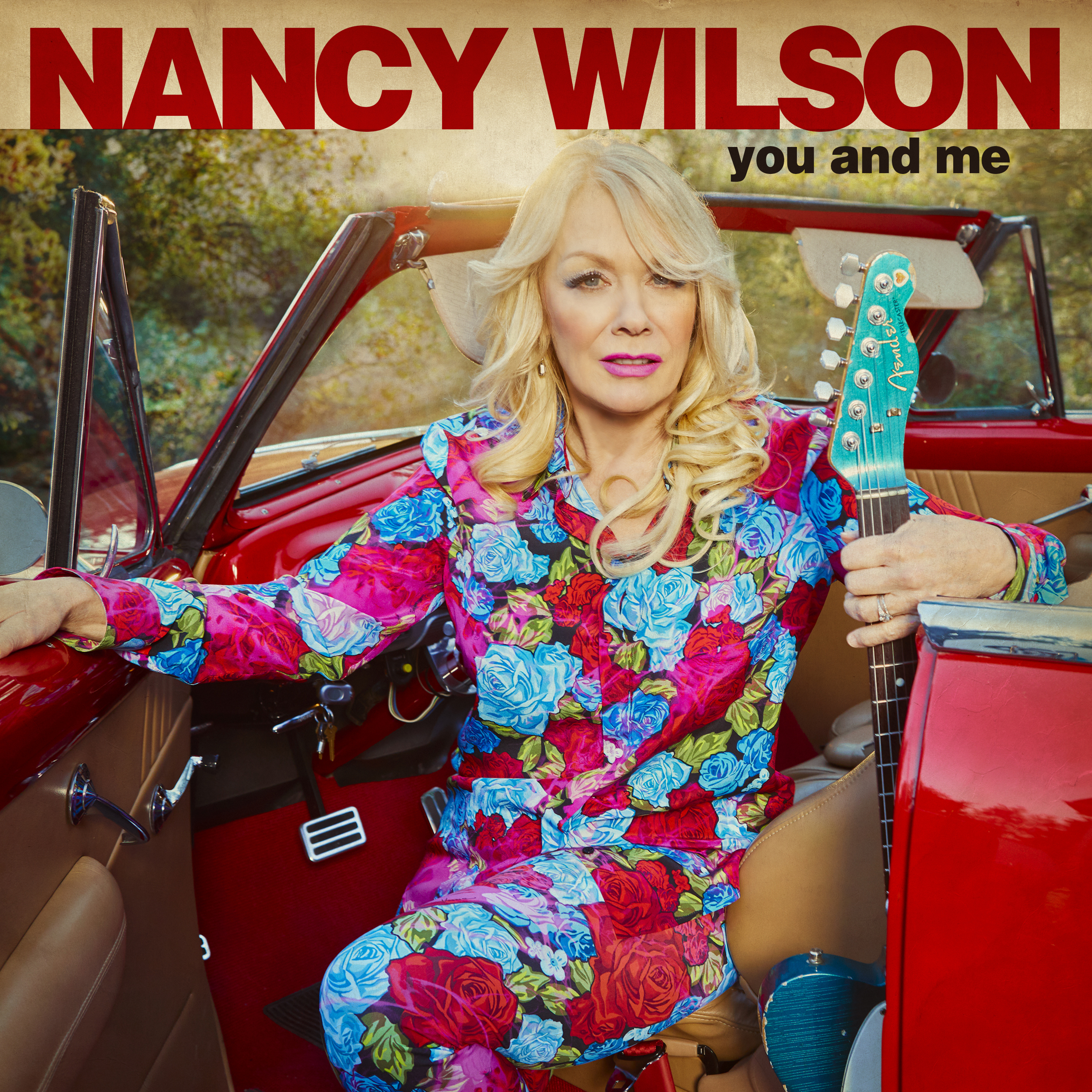
9. Nancy Wilson: You and Me. Carry On Music. It only took 46 years for Nancy Wilson to get around to making her first full-fledged solo studio album. Mainly recorded in a home studio located above the garage in Wilson’s Northern California home, You and Me balances astutely heartfelt — pun intended — originals (the controlled resignation of “Walk Away,” the dreamy fingerstyle reverie of “We Meet Again”) alongside some choice, hand-selected covers. Said covers include Wilson’s poignant duet on Simon & Garfunkel’s “The Boxer” with (yes) Sammy Hagar gamely tackling the angelic Art Garfunkel role, and a singular twist on Bruce Springsteen’s epic “The Rising” that shifts its male resolve over to a more nurturing and aspirational POV, given the song’s now-female perspective. The album’s closing track, “4 Edward,” is a poignant, delicate instrumental tribute to the late, great Eddie Van Halen, a longtime friend of hers. “I believe there’s an open channel of inspiration you can access or try to catch with a butterfly net,” Wilson told me back in March. “And once you have it, you can’t exactly turn it off. You’ve got your writer’s hat on, and you want to keep going. So, yeah, I feel warmed up to it — and I might as well make use of it. I’m speaking a language right now I don’t want to lose, so I’ve got more work to do. I came to play, and I think it’s going to be fun to stay in this creative space.” When it comes to whatever Nancy Wilson and her muse plan on sharing with us next, it can only portend welcome aural results — all of them straight from the heart.
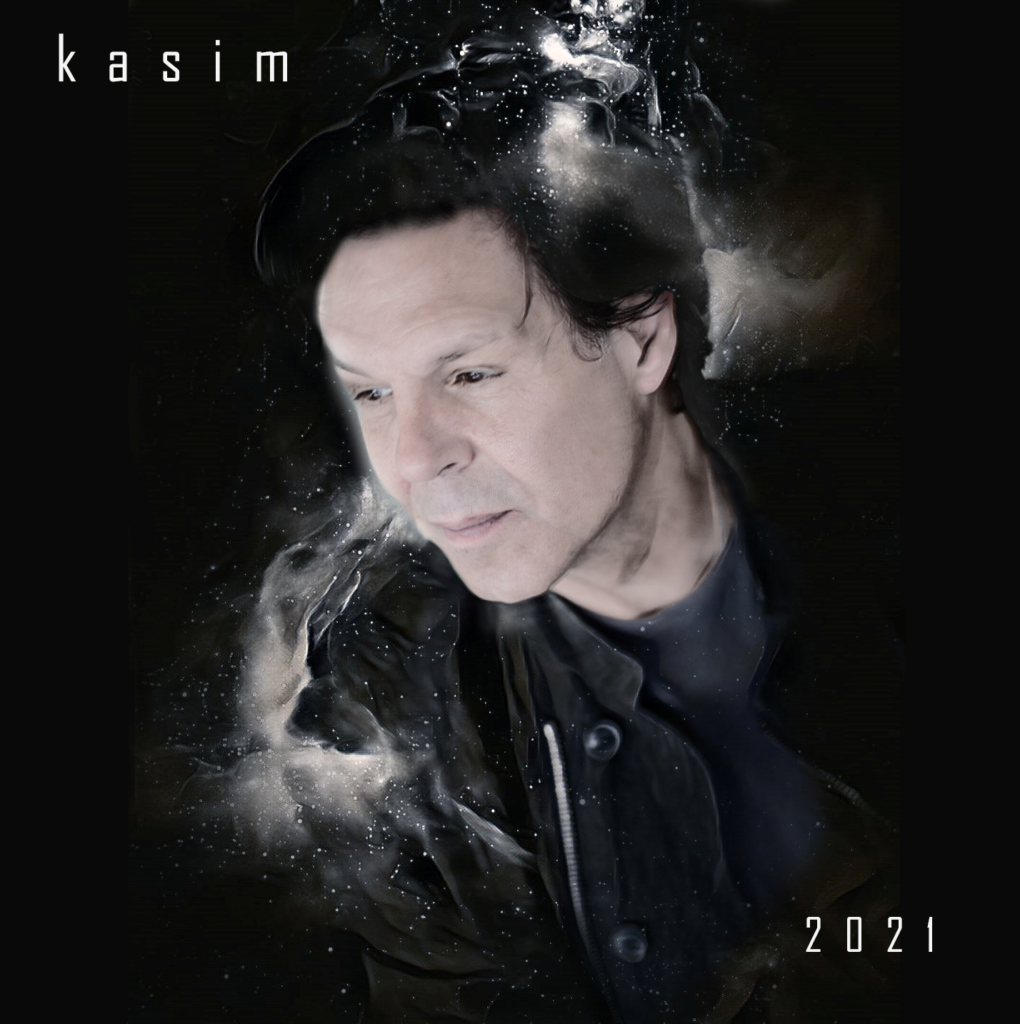
8. Kasim Sulton: Kasim 2021. Deko. An MVP sideman, bassist/vocalist Kasim Sulton has backed up many an AM/FM-friendly hitmaker of the rock era including Meat Loaf, Hall & Oates, and Joan Jett. His most notable song-and-dance partner since the mid-1970s has been Todd Rundgren, both in Utopia and on a multitude of the newly inducted Rock & Roll Hall of Famer’s solo endeavors. Rundgren has long admired Sulton’s knack for laying down a most supple supportive groove as well as knowing how to enhance prog-like musical themes and create memorable, singalong melodies — a litany of traits readily apparent all across the sweetly multilayered canvas of Kasim 2021, the maestro bassman’s fourth solo effort. 2021 stakes Sulton’s strengths on full display, whether it’s the proto-Beatlesque luster of “Her Love Is Sunshine,” the three-part guitar harmonics throughout “In the Name of Love,” or the knowing wink-nudge lyrical nod to Brother Todd on the humble-brag barrelhouse shuffle of “Unsung.” Pay special attention to the spontaneous lightning-quick laughing jag during the second verse of the resigned but wary “God Kicked the Stone” — a more than nearly human moment wisely not edited away for a cleaner line reading. A come-one, come-all sonic smorgasbord, Kasim 2021 swings mightily and rightly, thanks to Sulton’s steady songsmith’s swat.
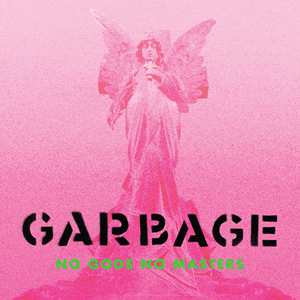
7. Garbage: No Gods No Masters. Stunvolume/Infectious Music. Shirley Manson is a bloody force of nature. The fiery Scottish vocalist/chief lyricist pulls no punches on Garbage’s seventh album, No Gods No Masters, and her three sympatico American bandmates take no prisoners either. Steve Marker, Duke Erikson, and Butch Vig are all masters of the art of mix layering, collectively furnishing all 11 songs here with a basketful of sonic Easter eggs that reveal themselves further upon each successive listen. In effect, they’ve laid down the ideal multitrack audio thread-count bed for Manson to spin her unblinkingly raw yarns across. In addition to the expert enmeshing of sounds both sampled and performed, Garbage manipulate volume swells and minimalist-to-maximal track-layering seemingly at will. Sometimes Manson’s chilling voice owns the entire soundfield, sometimes Vig’s pummeling drums march to the forefront, and other times a veritable Marker/Erikson guitar army stomps all other instrumentation comers into powder. The title track unfurls with an electro tsunami all-aswirl across the channels, while the gender-role bending treatise of “Godhead” counters the cinematic doomed-romance evisceration of “A Woman Destroyed.” (Incidentally, the deluxe edition serves up eight more aural dervishes.) The moral of this exhilaratingly blunt story: Don’t mess with Manson and her mates, for No Gods unequivocally asks no quarter.
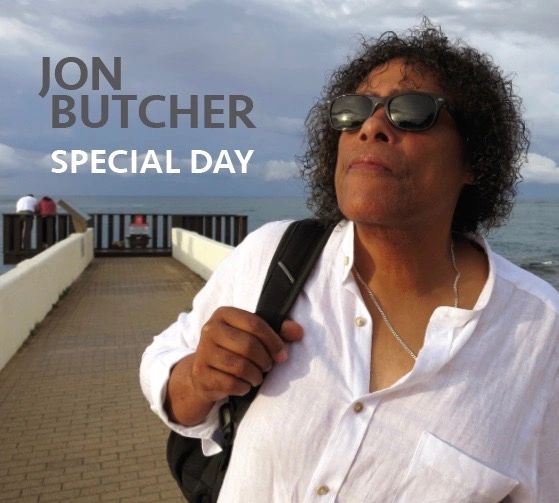
6. Jon Butcher: Special Day. Electric Factory. There’s nothing I like better than seeing career artists continue to grow as the years progress, and perhaps there’s no other artist whom I like seeing flourish decades into his career than Boston scene-bred singer/songwriter/ace guitar-slinger Jon Butcher. Butcher first came to prominence in 1983 leading the electrifying Jon Butcher Axis, whose razor-sharp observational treatise “Life Takes a Life” remains as societally poignant today as ever. Butcher’s muse maintains his perch atop the creative block, as evidenced by the full breadth of his latest effort, Special Day. Equal parts gritty, hopeful, joyful, critical, and inspirational, all 10 tracks of Special Day speak to Butcher’s inherent songcrafting skills. “Devil’s Train” sets the wheels in motion with some good ol’ gutbucket folk-blues pickin’ ’n sinnin’ (also dig those tasty harmonica counterlines, courtesy Glenn Bowie), while the jaunty, reggae-tinged ebb-and-flow of the title track challenges jingoistic tropes, the uplifting balladry of “How Does It Feel” celebrates the fine art of personal connection, and the touching, spiritual, strings-supported album closer “Architect of Peace” champions merging inner and outer harmony as one. Special Day is a truly invigorating statement from a special artist indeed, so make sure to take a deep ride alongside Butcher’s artistic axis to glean just how this perceptive, self-aware sentinel advocates achieving a higher power amidst the unrelenting push-pull between the good and bad signs of our times.

5. Steven Wilson: The Future Bites. Arts & Crafts/TFB. Steven Wilson, the undisputed once and future king of surround sound, has taken yet another giant creative leap forward with his new solo album, The Future Bites, which came to early-2021 fruition after a pandemically induced half-year deferral. TFB moves Wilson’s recorded C.V. into further semi-uncharted territory only hinted at on his last solo effort, August 2017’s course-shifting To the Bone. On TFB (ah, now you’re getting one of the many underlying meanings of that album title!), songs like the ’80s-centric lamentations of “12 Things I Forgot,” the alt-pop consumer indictment-cum-inducement of “Personal Shopper,” and the falsetto-drenched neo-prog soul drizzle of “Man of the People” all reflect the scope of the man’s many musical interests. And not to worry, surround fans — the multiple layers of TFB’s sonic palette can be thoroughly enjoyed on Blu-ray via Wilson’s envelope-pushing 5.1 and Dolby Atmos mixes alike. And if TFB’s genre-bending aural contents just so happen to ruffle some of those hardline “don’t ever change” expectation feathers that permeate his fanbase flock, then that’s totally fine by him. “You know what? People who only listen within a very limited set of musical parameters are not the people I’m trying to appeal to, really,” Wilson admitted to me back in January. “If you want generic music, there’s plenty of it out there. What I want to do with my life and my career is to not be affiliated with a particular genre, but to create my own musical universe.” I think it’s fair to say the broad-stroke contents of The Future Bites fit that particular cosmically inclined bill to a T, F, and B all at once.
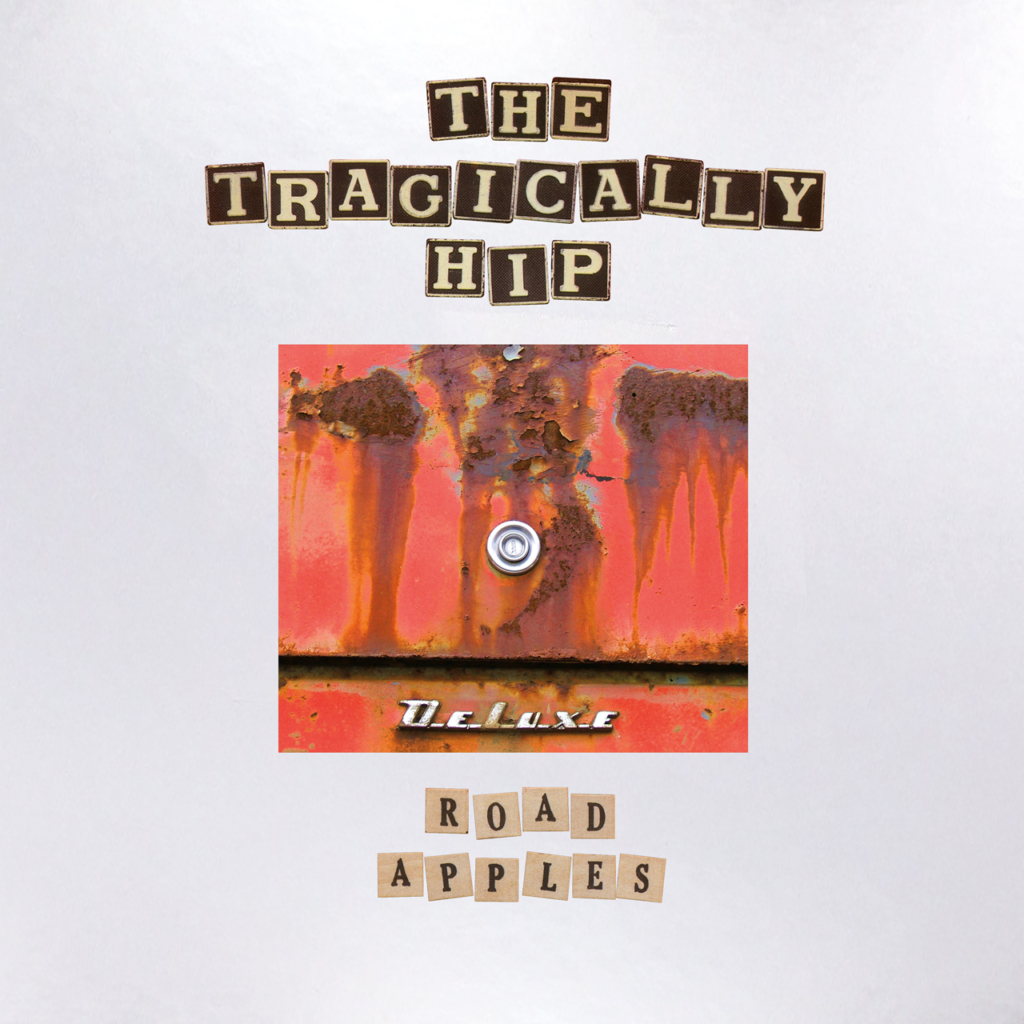
4. The Tragically Hip: Road Apples – 30th Anniversary Deluxe Edition. Universal Music Canada. Canada’s still-favorite sons The Tragically Hip get properly feted with a pair of box sets commemorating their February 1991 breakthrough album, Road Apples — one of them housing 4CDs and a Blu-ray featuring masterful 5.1, 7.1, and Dolby Atmos mixes courtesy the irrepressible Richard Chycki; the other with 5LPs, plus the very same Blu-ray. Besides the remastered album itself and related Blu-ray offerings, each box configuration includes the Saskadelphia EP (six rare tracks unearthed from the vaults, including the inevitably penetrating earworm “Ouch”), Hoof-Hearted (a litany of fierce Apples outtakes, demos, and alternate versions, with a further stripped-down, even-more-intimate version of “Fiddler’s Green” that will touch your very soul), and Live at The Roxy Los Angeles, May 3rd, 1991 (the latter of which contains late Hip vocalist Gord Downie’s legendary live “Killer Whale Tank” improv story, smack in the middle of “New Orleans Is Sinking”). Full disclosure: I was truly honored to be asked to write the liner notes for this magical collection, and as I revisited the core album, I was again reminded of the kinetic spark that drew me inside the world container of The Hip’s distinctive sound in the first place — after all, I didn’t see them live at least 92 times over the course of 25-plus years for nothing. Instantly, I reconnected with Gord Downie’s lyrics and his yearning and snarling vocal style (see the modern-day Shakespearean denial and personal boundary-testing of “Cordelia”); Rob Baker’s gnarly guitar lines taking root in the right channel (dig his grizzled-caribou slide work on “Born in the Water”); Paul Langlois’ subtle yet equally weighty and tasty guitar counterpoints over on the left (go ahead, try to unravel his seductively mysterious yet uncopiable opening riffage on “Little Bones”); Gord Sinclair’s truly sublime bass lines that anchor every single track (bask in the languid groove that propels each choreographed movement of “Fight”); and Johnny Fay’s pocket-nestled drumming, belying the depth of his deeply studied jazz-inflected chops (just marvel at the deft stick and rim-work and cymbal-tap choices all throughout “The Luxury”). In short, this deep-dive collection is a treasure trove of both polished and uncut gems for Hip fans both old and new alike to connect with. No, I insist, please, after me — The Hip’s always-in-sync five-man sonic mindmeld will continue to make Road Apples worth stepping into again and again . . . and again.
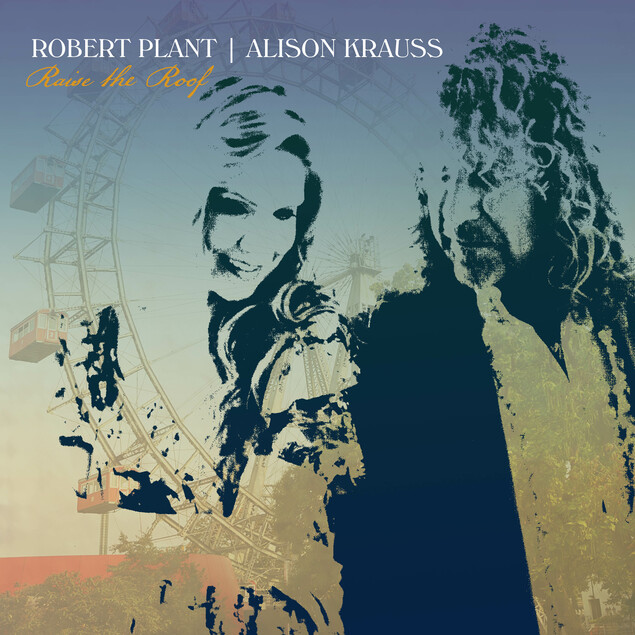
3. Robert Plant & Alison Krauss: Raise the Roof. Rounder. Sequels can be dangerous minefields to hoe, especially when you’re seeking to reconstitute the magic elixir that fueled a seemingly once in a lifetime collaboration. Robert Plant & Alison Krauss’s surprising October 2007 partnership Raising Sand captured the Euro-Americana zeitgeist and a half-dozen Grammys to boot, so it’s a good thing Raise the Roof raises the bar across the soundboard. Though T Bone Burnett remains the pair’s connective knob-turning gluemeister, he also expands the backing band’s palette to explore renewed horizons, resulting in 12 tantalizing tracks that show Sand was no fluke. The opening salvo, a twist on Calexico’s “Quattro (World Drifts In),” highlights a chilling vocal blend that equally channels the individual character of both singers — something other producers rarely achieve as consistently as Burnett does — abetted by empathic, unintrusive percussion and piano accents. Krauss takes the lead on Allen Toussaint’s haunting “Trouble With My Lover” (with Plant doubling her only when the title phrase repeats), while the Plant/Burnett original “High and Lonesome” reaches across the great divide where blues and folklore entangle. Rather than mirror past achievements, Raise the Roof plants a framework for this high plains drifting duo to continue pushing forward in their quest to mine songwriters’ gold, both old and anew.

2. Crack The Sky: Tribes. Carry On Music. Weirton, West Virginia’s Crack The Sky became an instant regional FM favorite during their 1970s heyday, and have since spent many an ensuing year making a more nationally recognized name for themselves by blending their progressive-leaning roots with a pop-tinged, hard-rock edge. All 13 tracks on Tribes, CTS’s 18th studio album, cement their sonic evolution. Singer/bandleader John Palumbo is one of the most underrated songwriters of the rock era, a man blessed with a consistently sharp observational ear that challenges listeners to delve beyond the surface lines in the sublime tradition of Lou Reed and John Lennon. Palumbo’s deliberately nonpartisan approach only heightens the sinister under/overtones of the riff-crunching title track and the ominous, shoulder-shrug unrest at the heart of “Another Civil War,” its seamy underbelly amply buttressed by banjo and mandolin counterlines and Joey D’Amico’s precision militaristic fife-and-drumming in the back half. Rick Witkowski and Bobby Hird’s decades-bred intuitive guitar tandem is none more at its peak than on the anything-but “Quick,” a 9-minute strings-drenched suite that crescendos with a majestic left/right-channel solo-tradeoff dance instilled with much dynamic grace. Tribes is a full-on Crack attack that will have you raising a communal fist in the air to toast CTS’s full-fledged artistic ascendency.
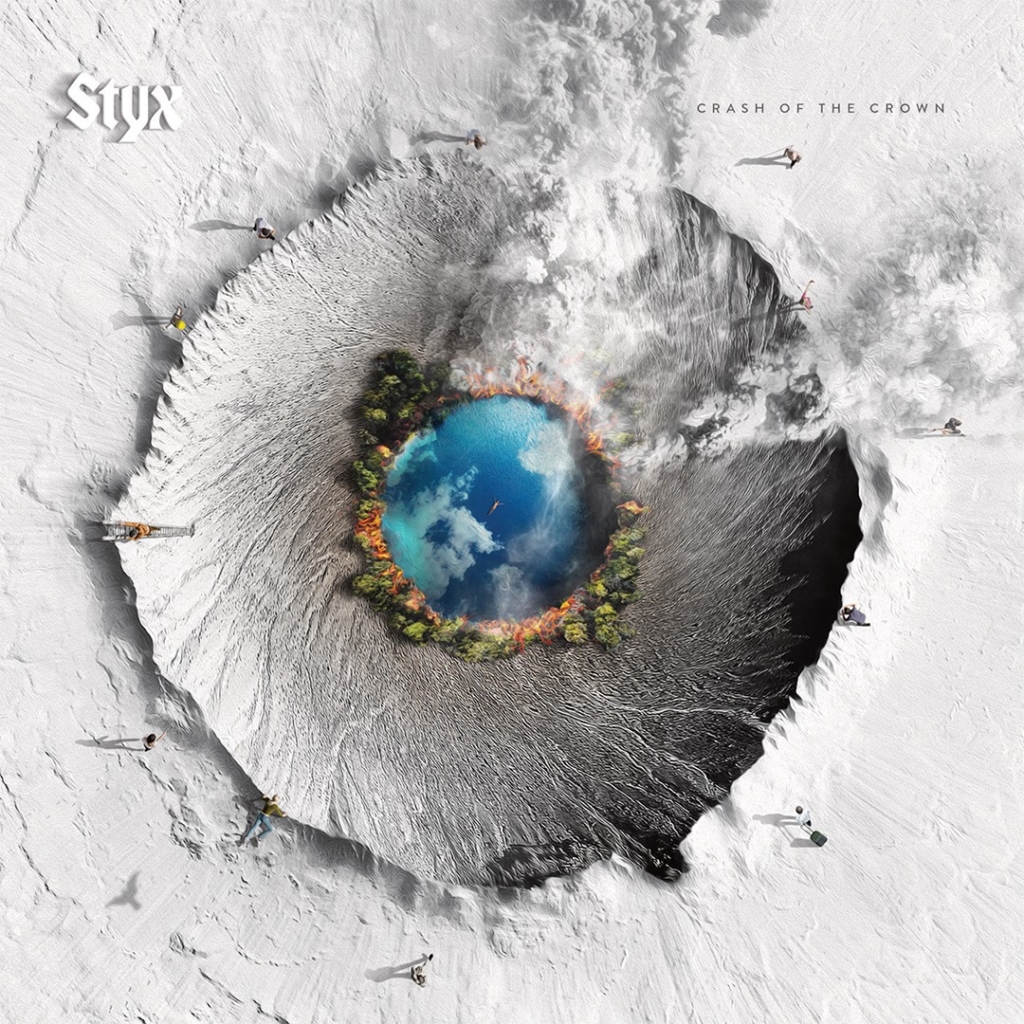
1. Styx: Crash of the Crown. Alpha Dog 2T/UMe. How do you follow up a career concept album that explored a perilous manned mission to Mars? If you’re veteran rock stalwarts Styx, you come back down to earth in spectacular fashion to create a 15-song supersonic cyclone that encapsulates universal emotions, wrestles with top-of-mind issues, and celebrates personal triumphs over adversity in ways everyone can relate to personally. These are just some of the deep-seated feelings evoked by Styx’s 17th studio album, Crash of the Crown. Produced by Will Evankovich — the man behind the boards for the band’s previous studio masterpiece, June 2017’s The Mission, and recently appointed fulltime bandmember — Crash of the Crown (or COTC, for short) is a come-one, come-all clarion call that celebrates the creative mindmeld of seven musicians-slash-brothers in arms at the top of their collective game. The proof can be found throughout all 45 minutes of COTC, whether it’s the wistful observational musings of “Reveries” — an instantly catchy song featuring Styx’s patented, always-uplifting four- and sometimes five-part harmonious vocal blend on its choruses — the unmistakable snarl of “A Monster” that’s bolstered by a whirlwind outro solo from co-founding guitarist/vocalist James “JY” Young, the breathe-easier singalong mantra that permeates guitarist/vocalist Tommy Shaw’s shoulder-leaning, shelter-through-the-storm sonic rainbow known as “Sound the Alarm,” the unapologetically progressive buildup of the title track (with three different lead vocalist turns no less, courtesy Young, Shaw, and keyboardist/vocalist Lawrence Gowan), the dark yet redemptively hopeful cautionary tale that frames “Hold Back the Darkness,” or the elegiac communal grace of “To Those.” In essence, Crash of the Crown is a modern-day sonic chronograph of the endless regenerative cycle of the rise and fall — and rise again — of our shared human experience. Beyond the shadow of a royal doubt, I hereby decree Crash of the Crown to be a timeless album for the ages, and duly acknowledge its reign as my absolute hands-down favorite album of 2021. Long live the king!
